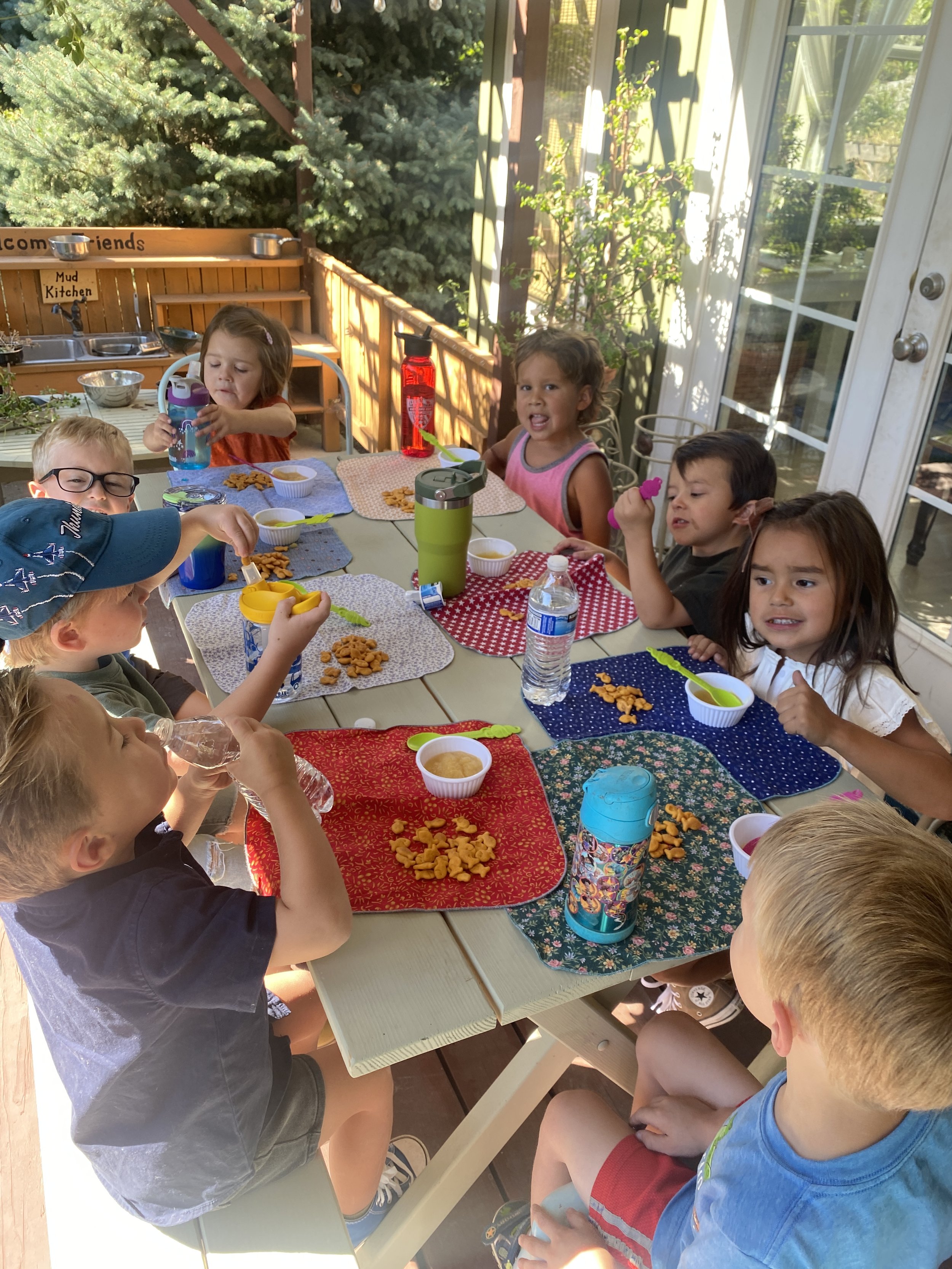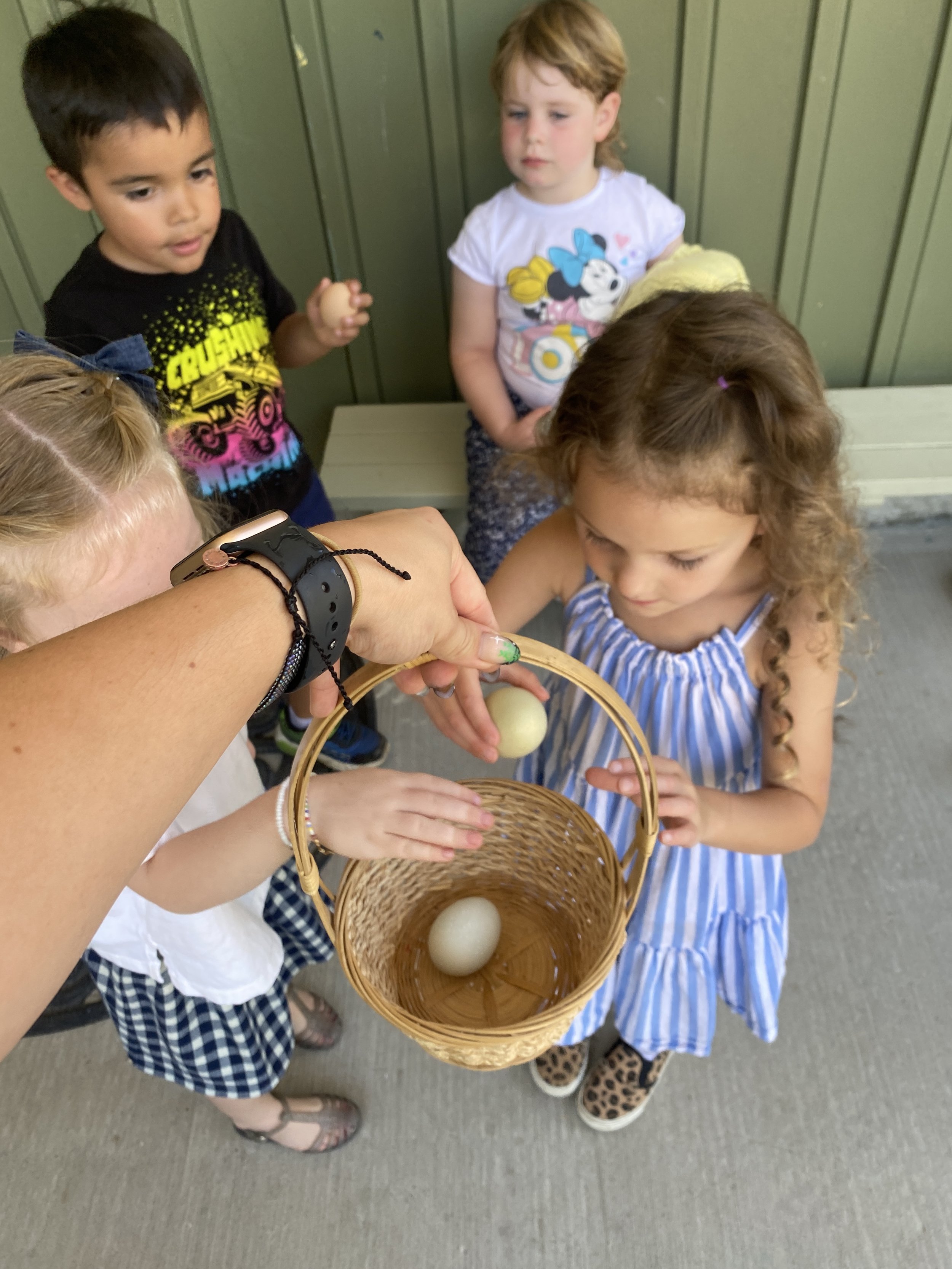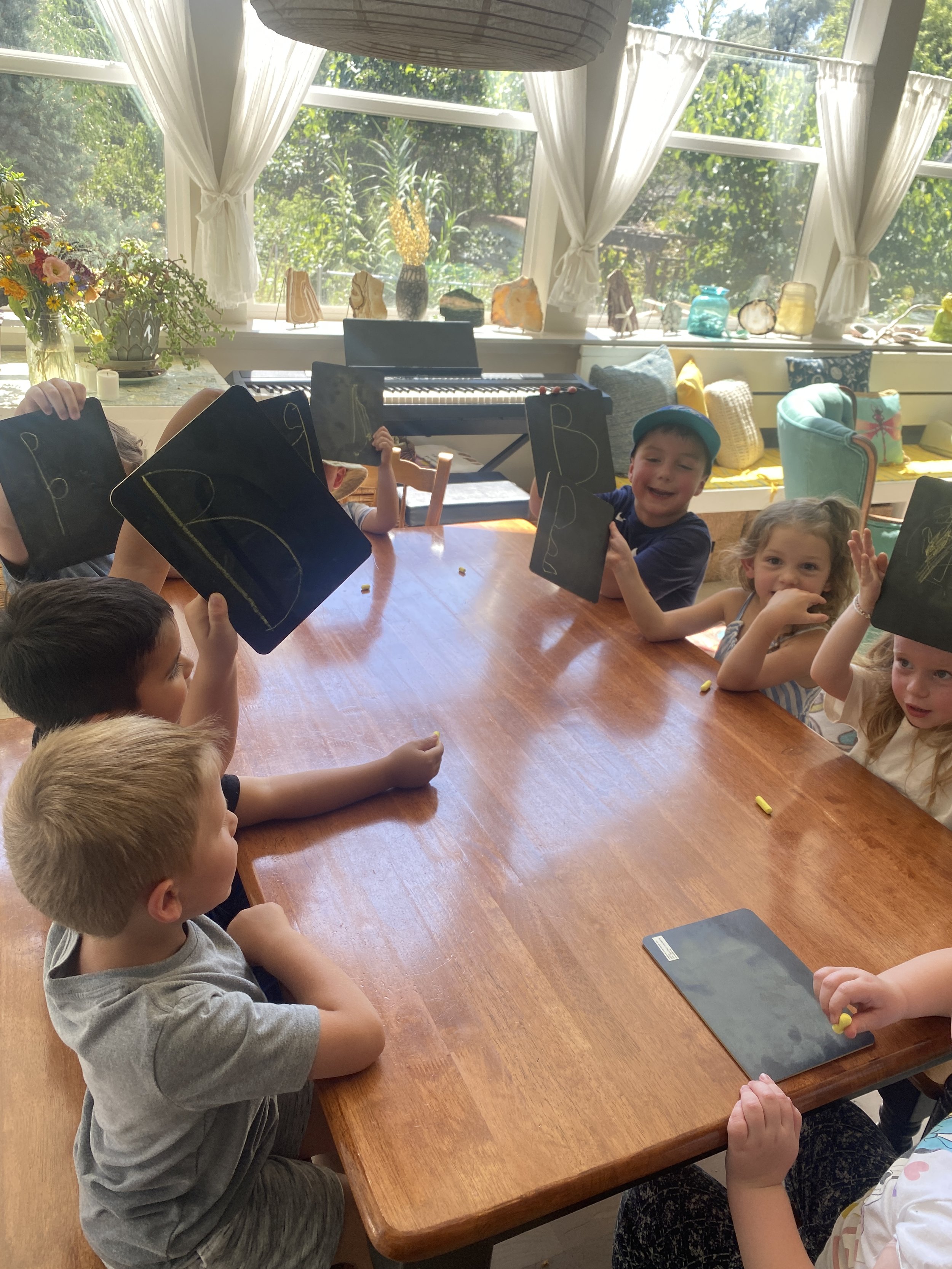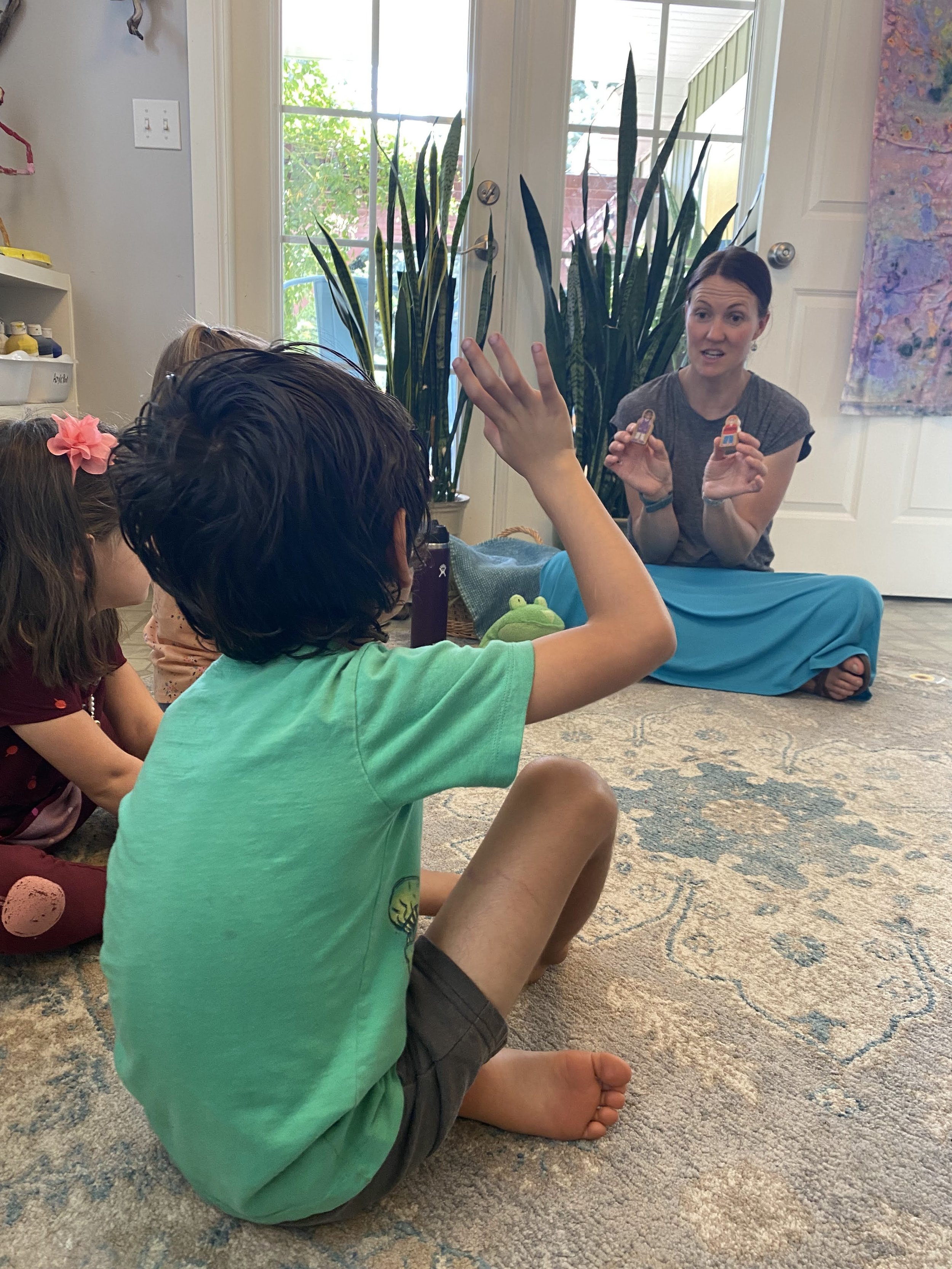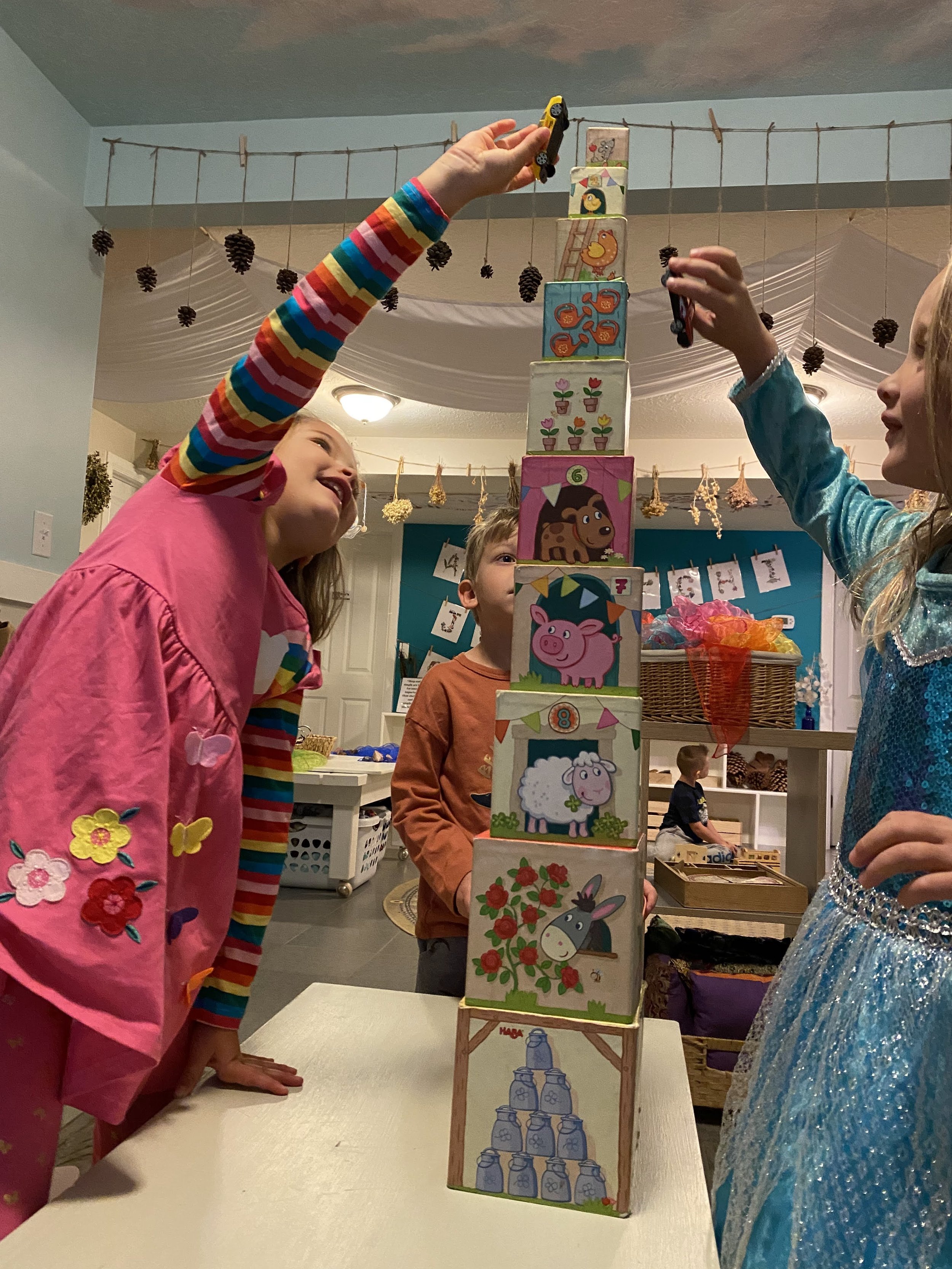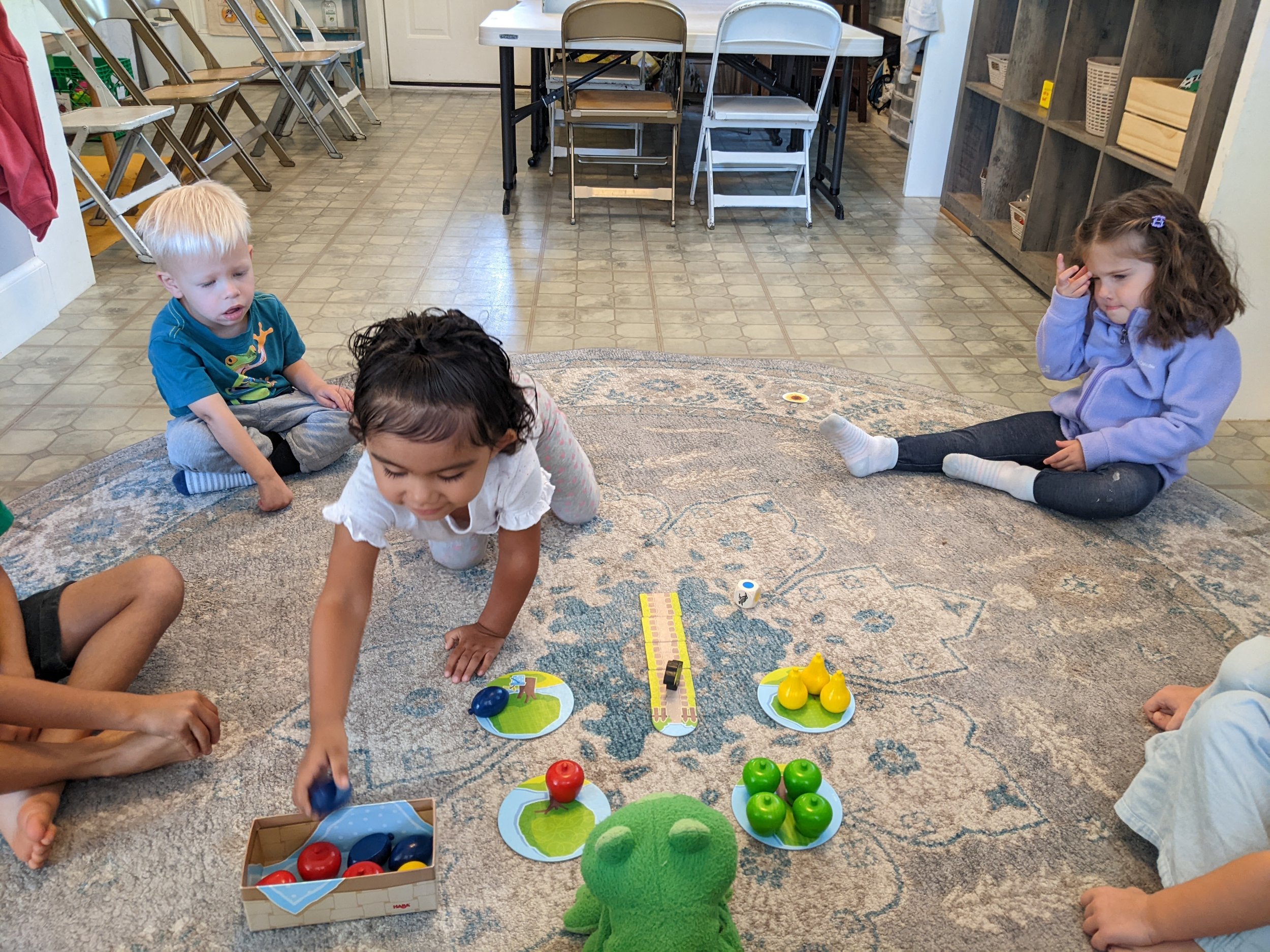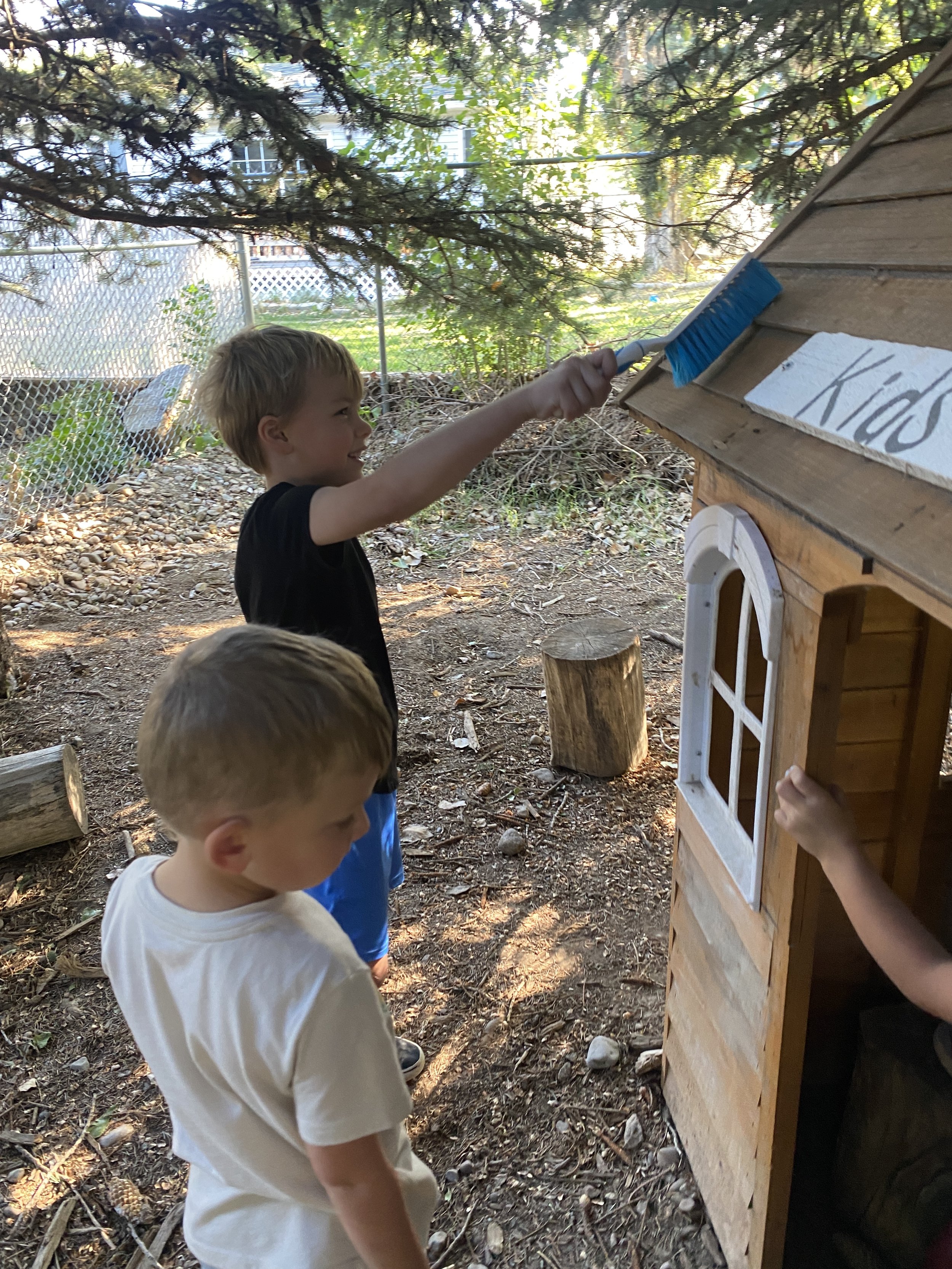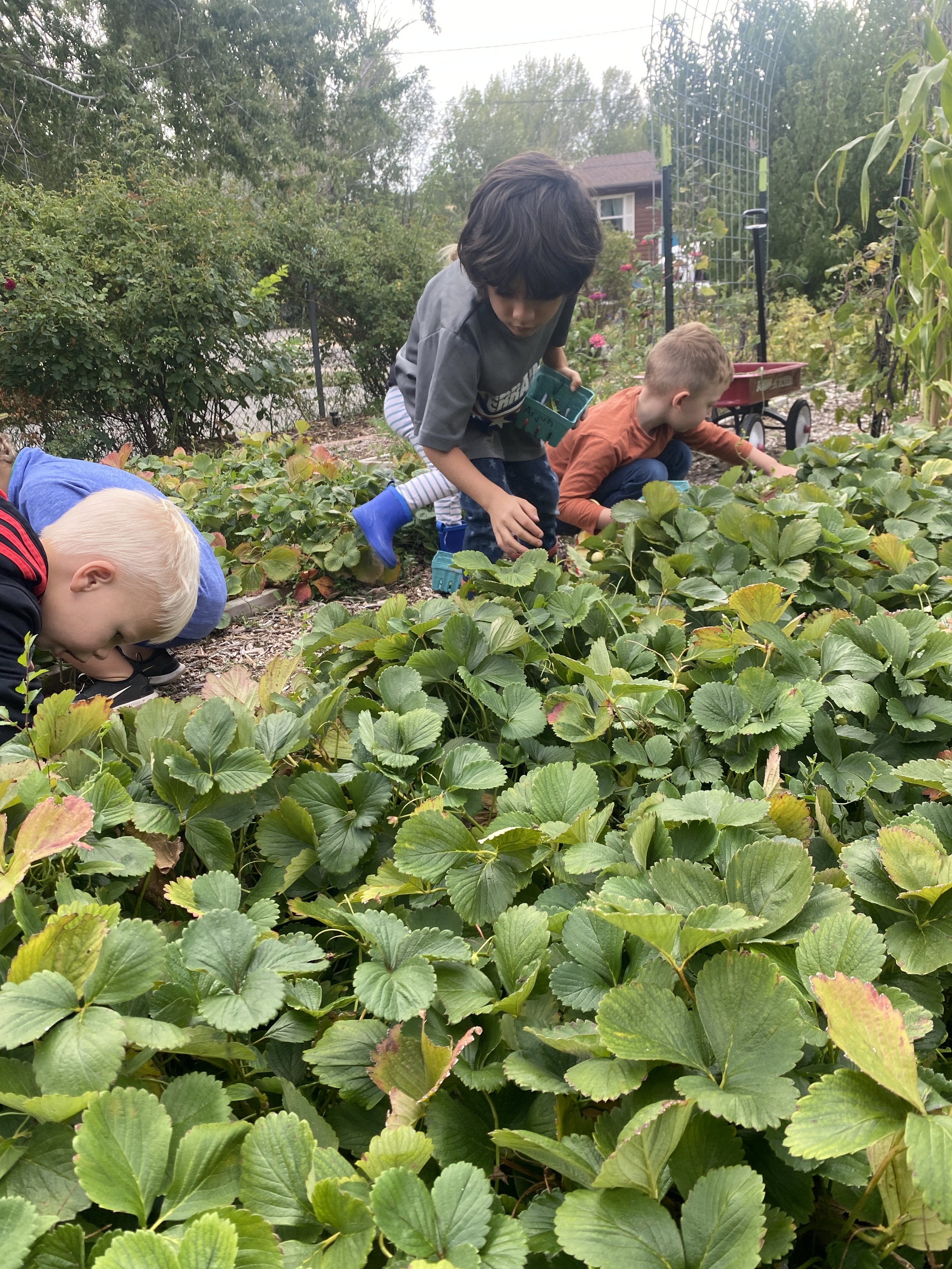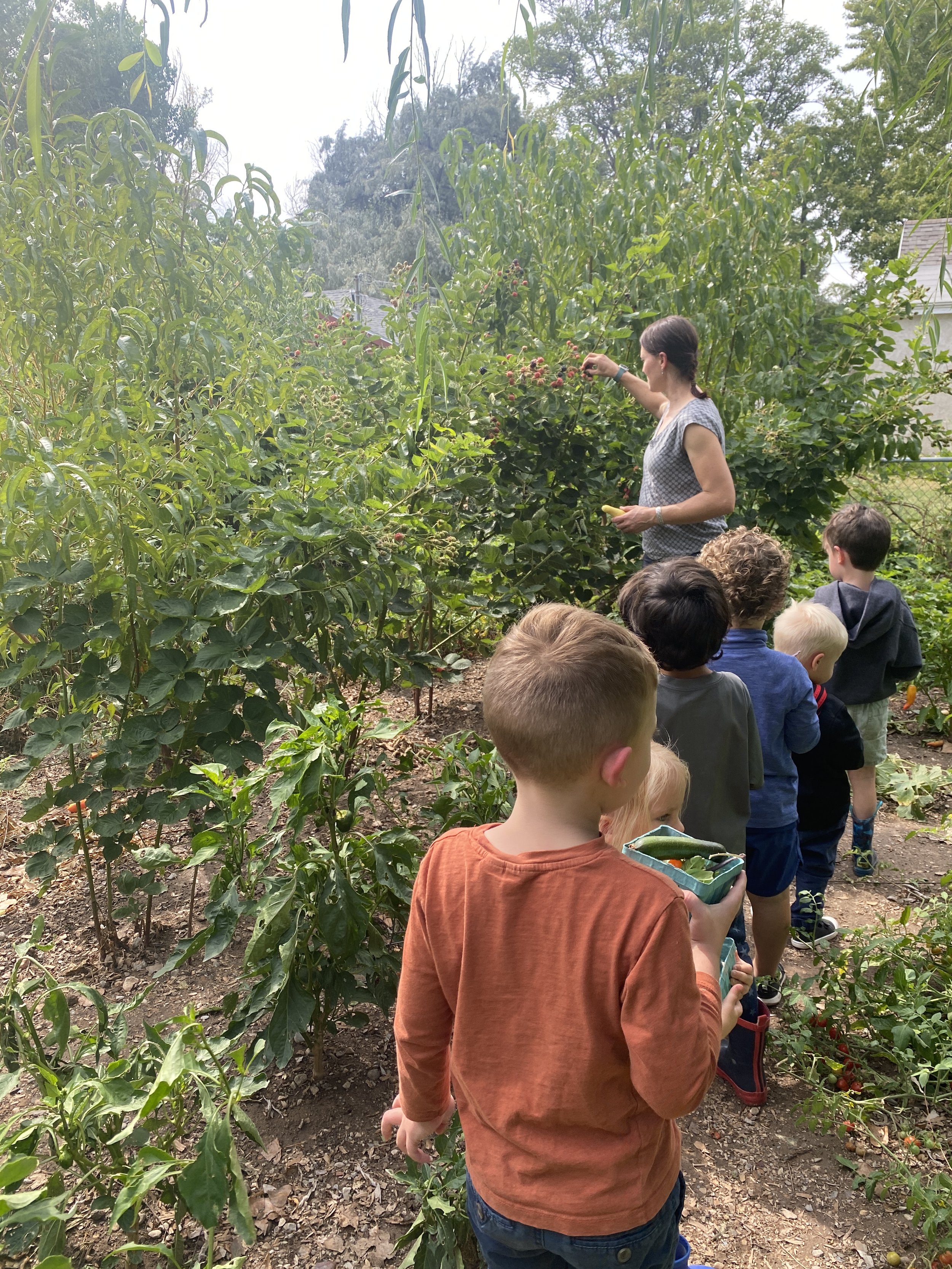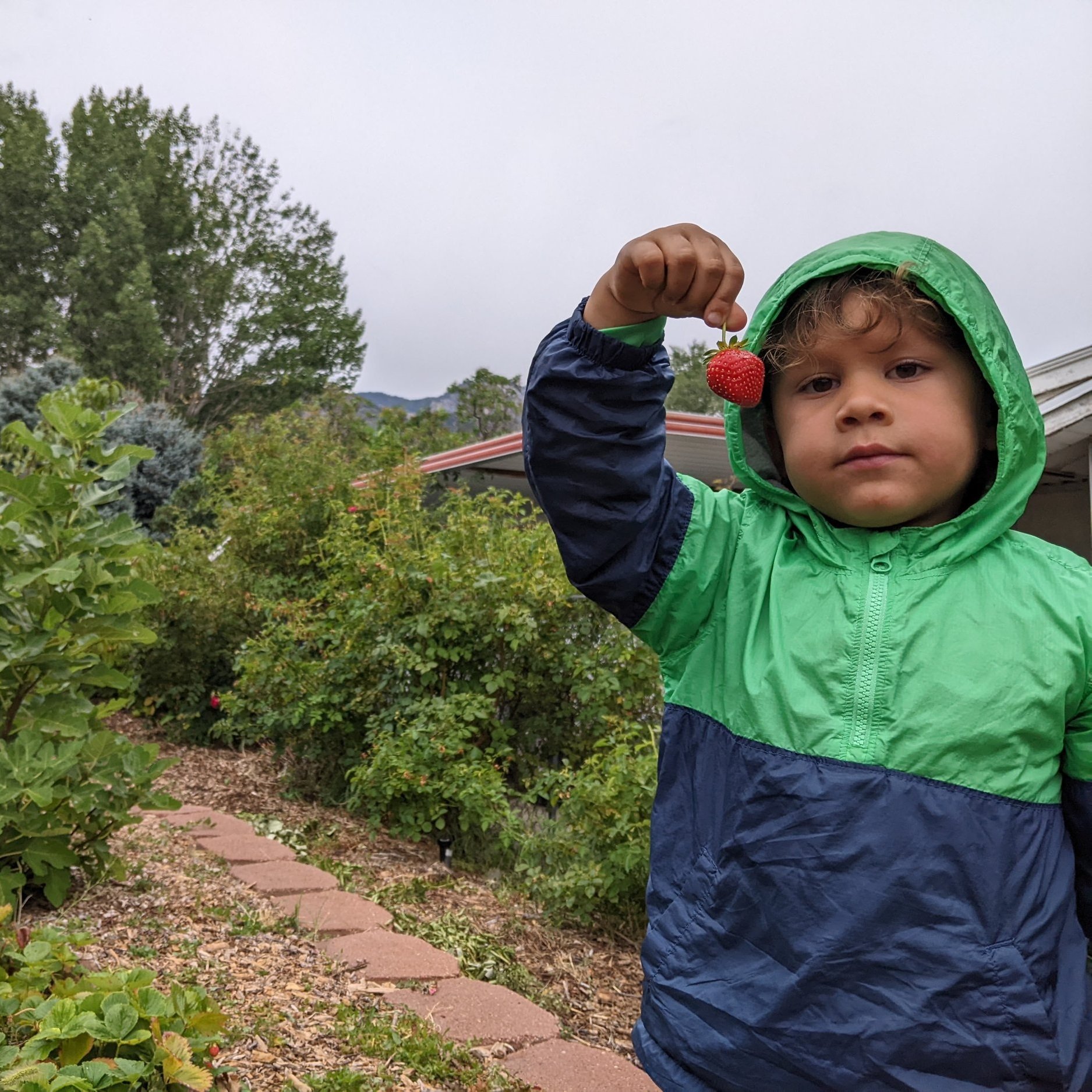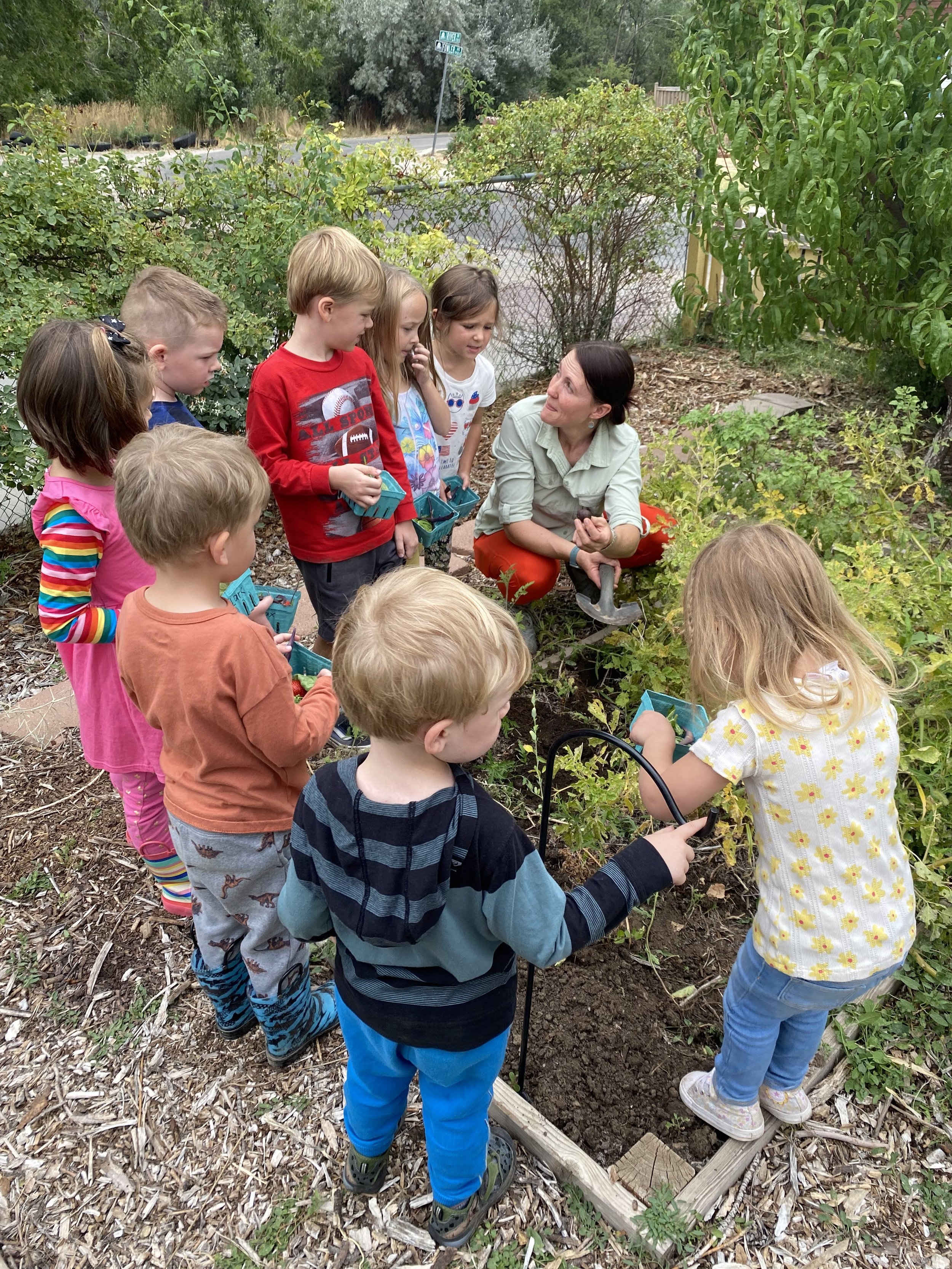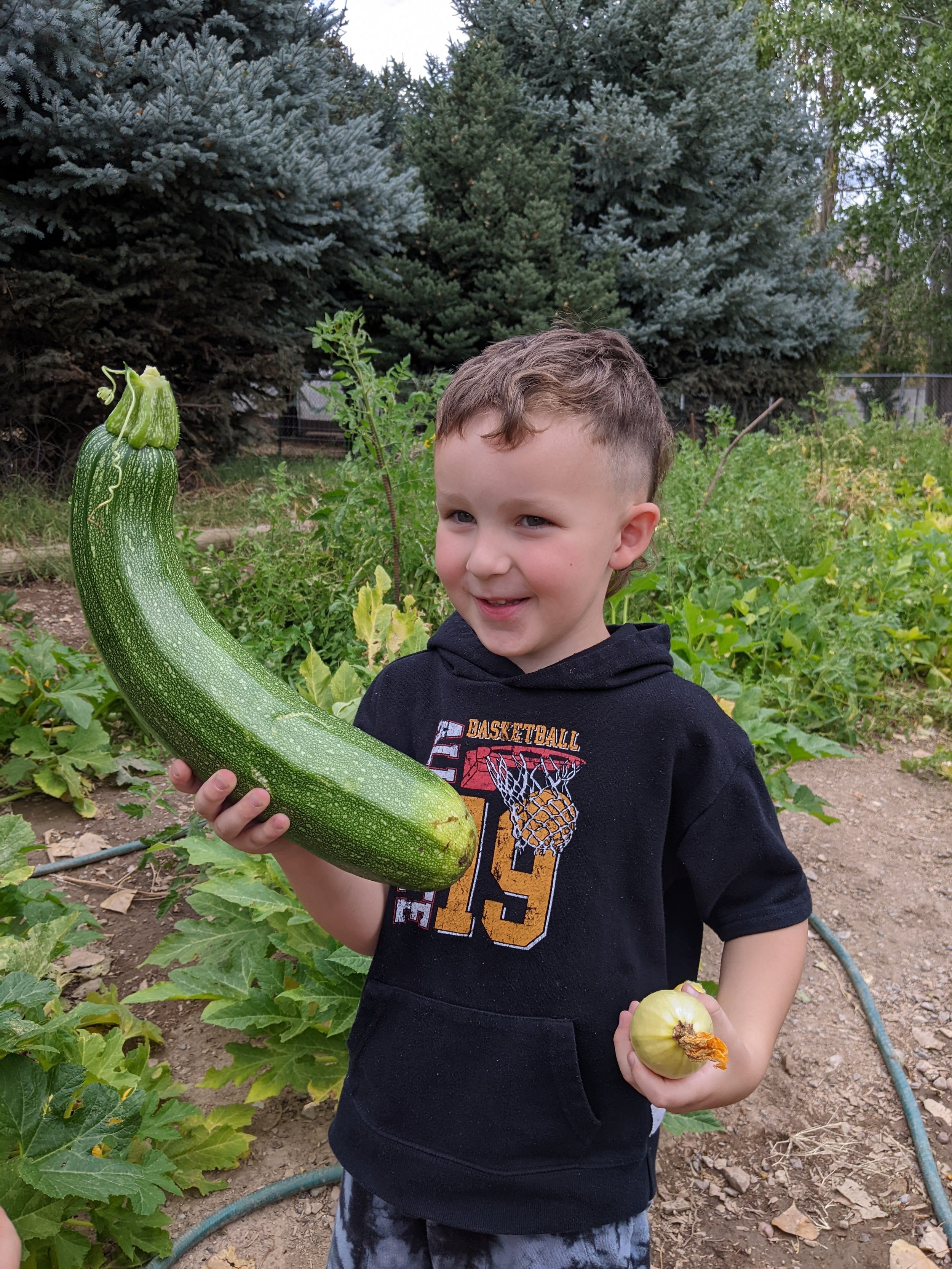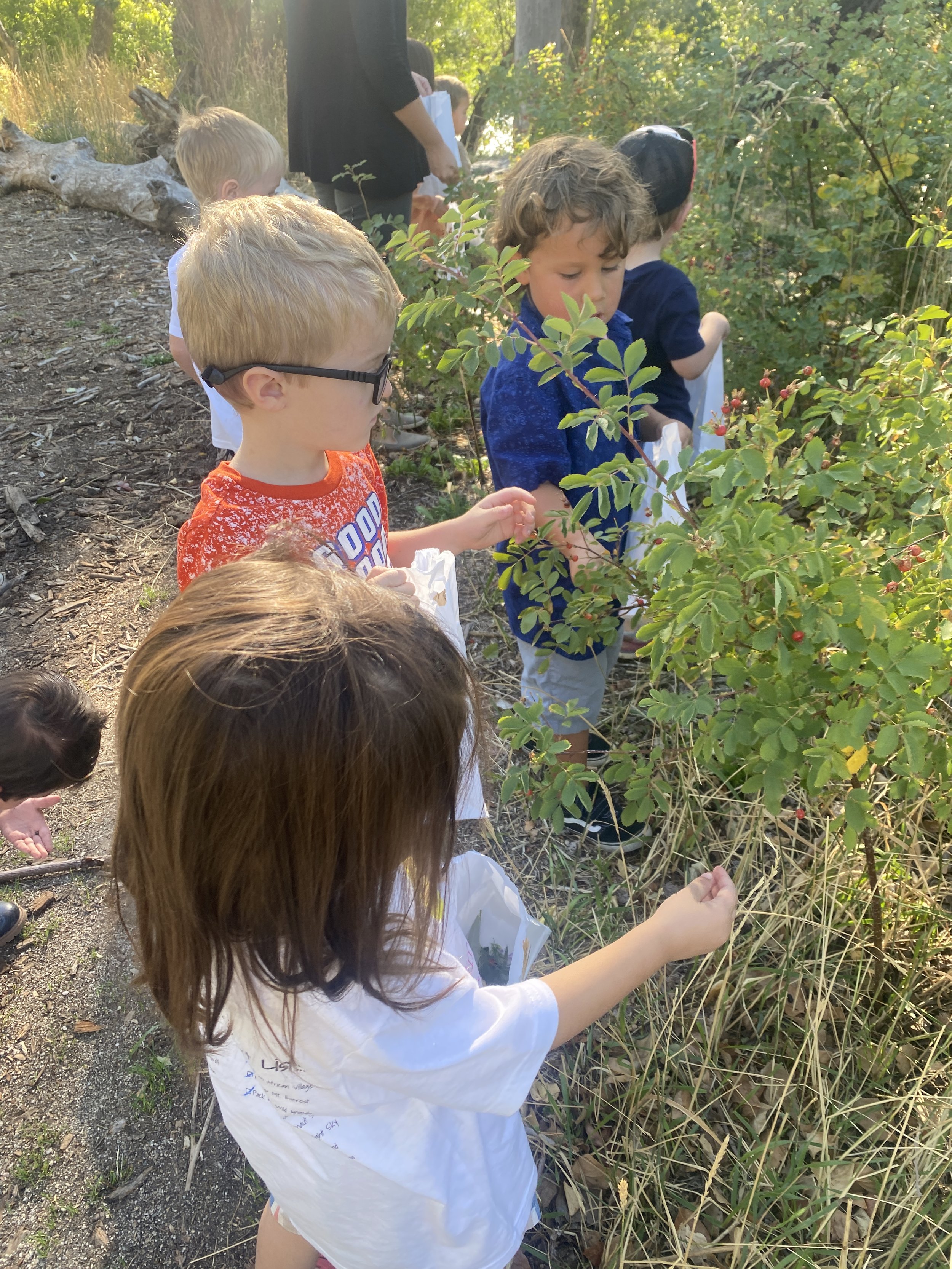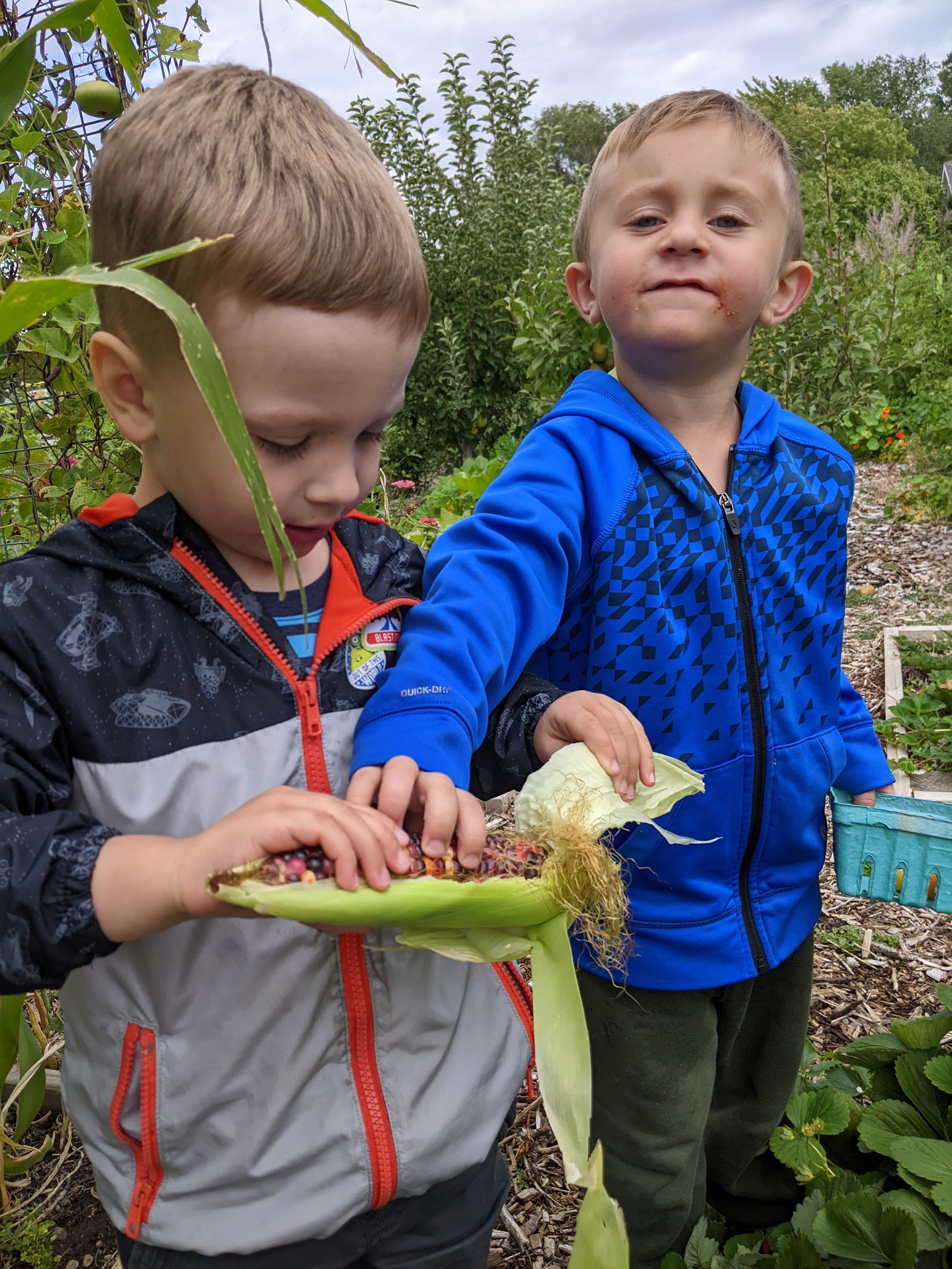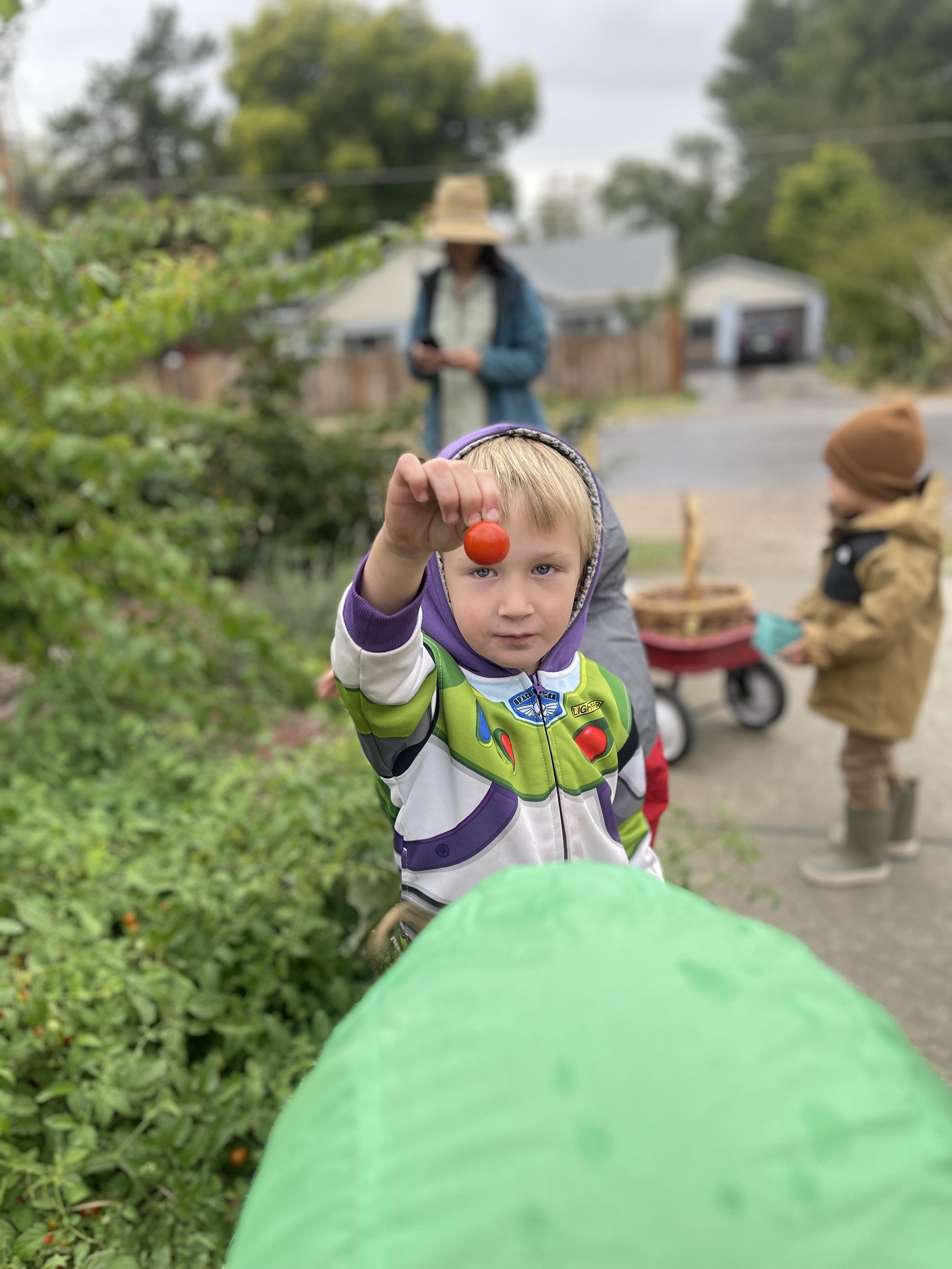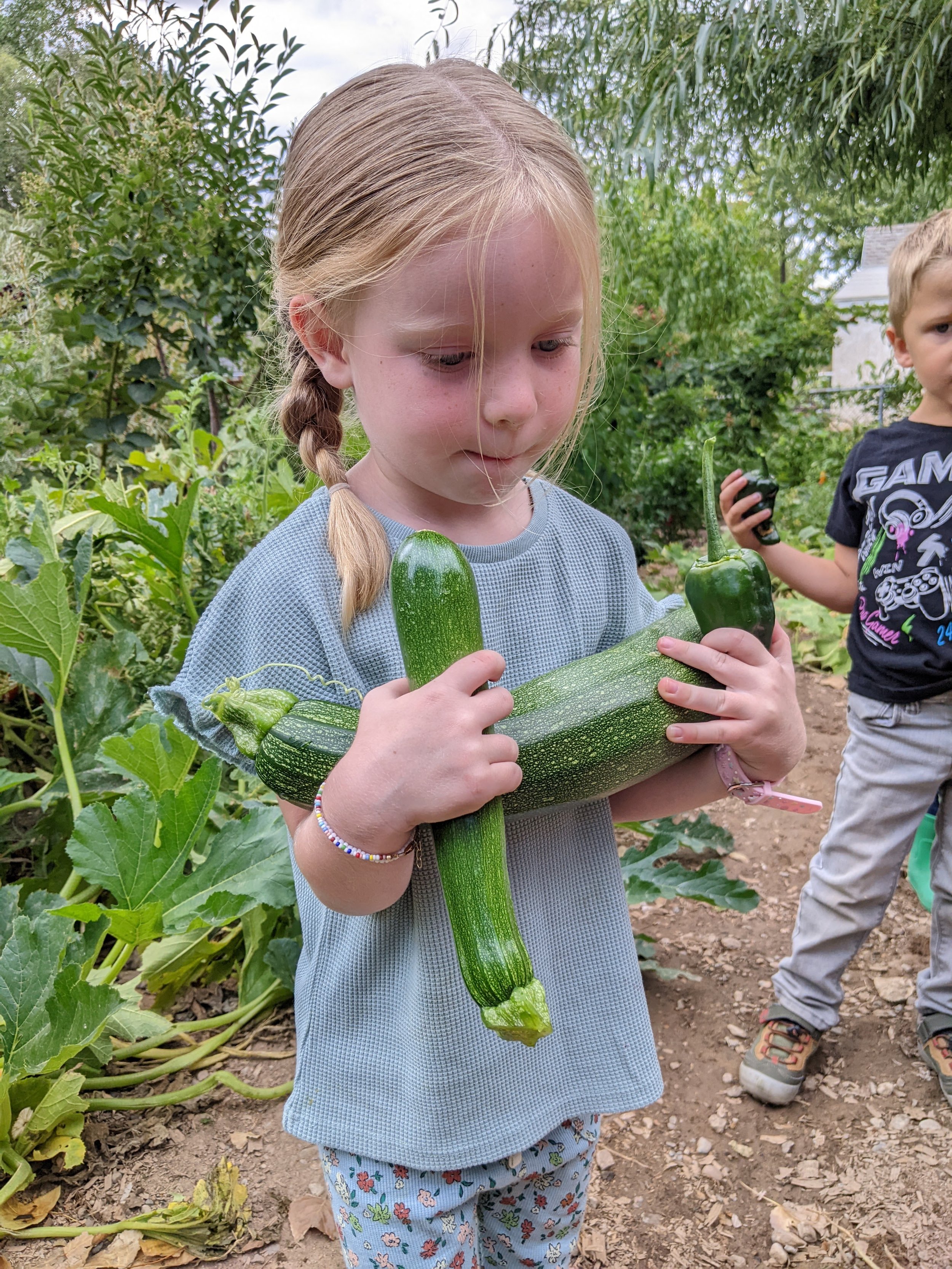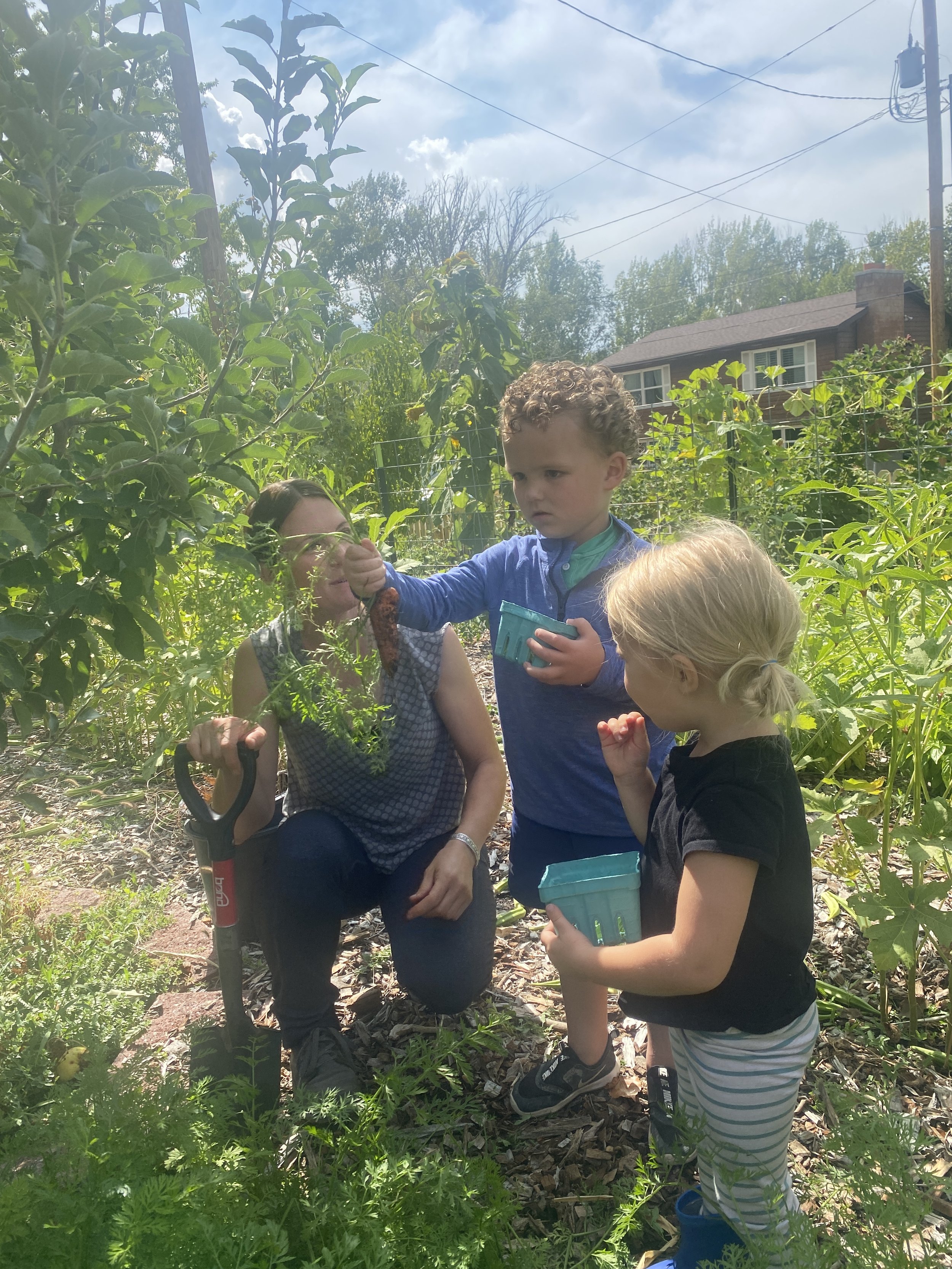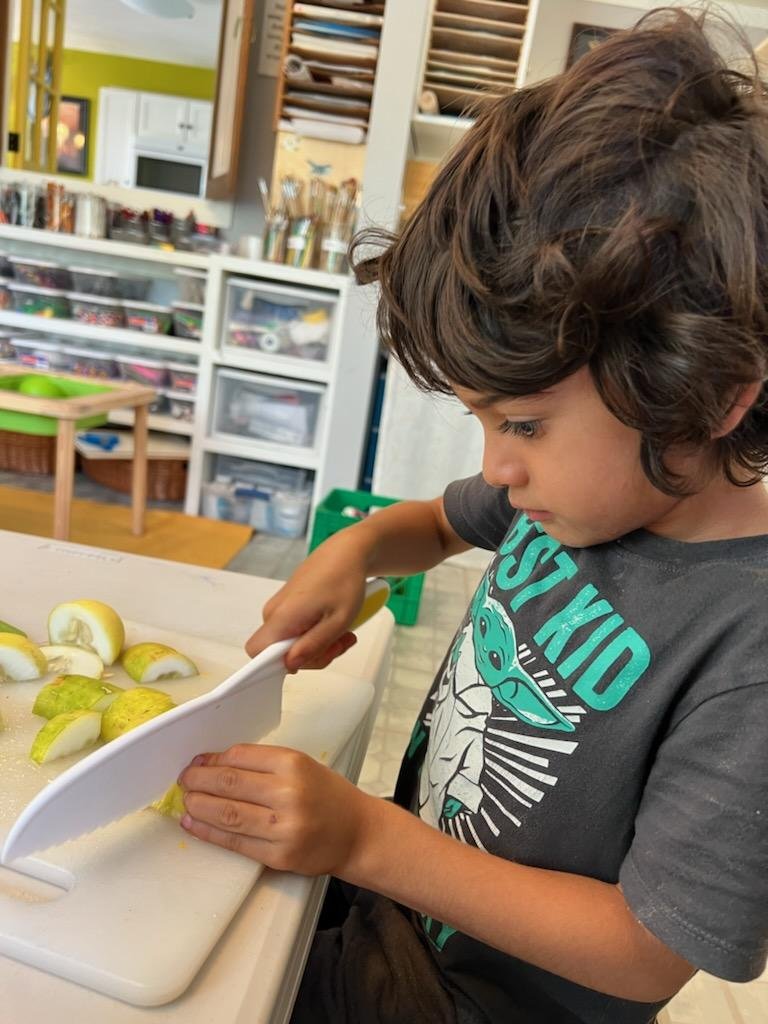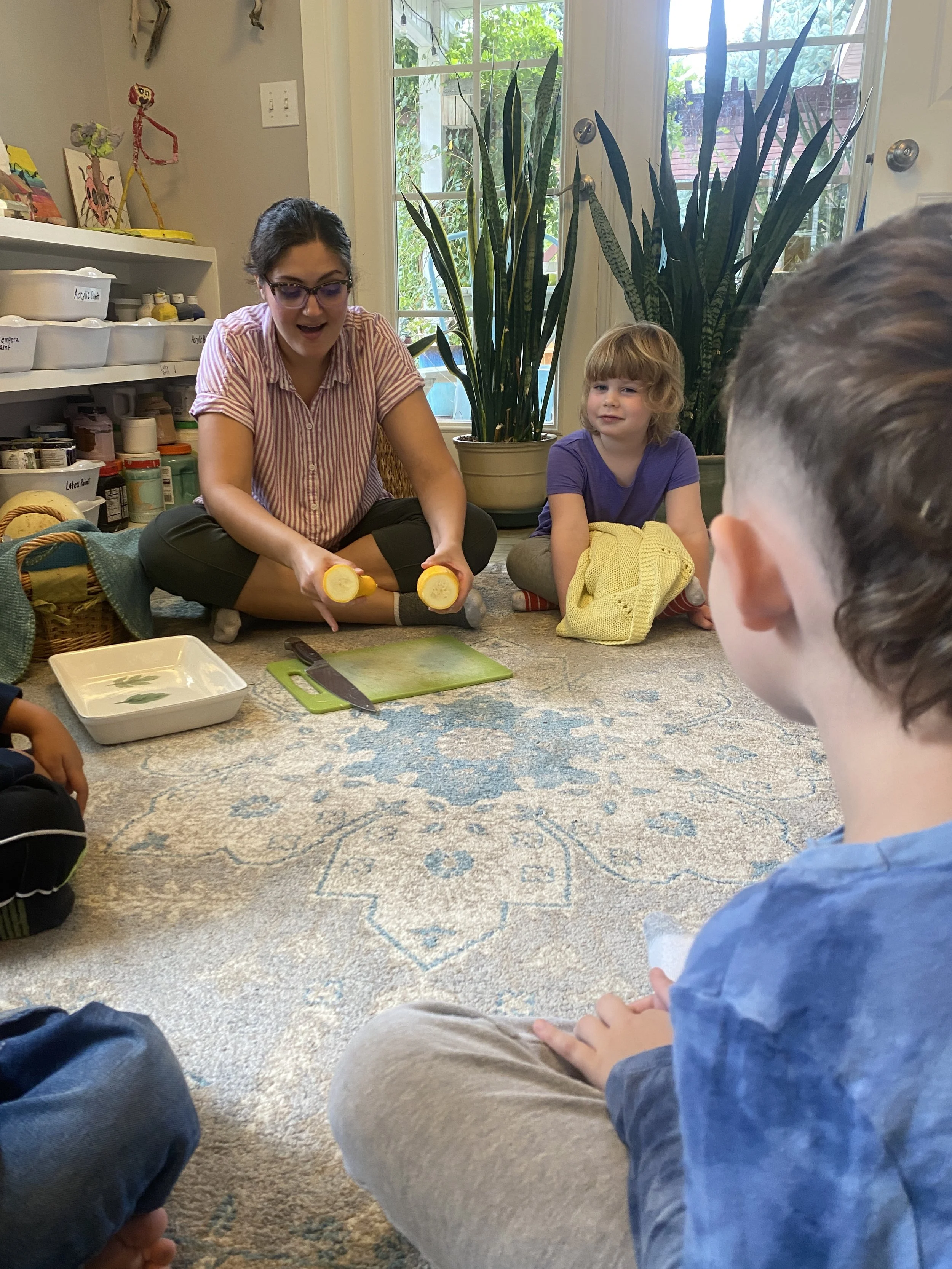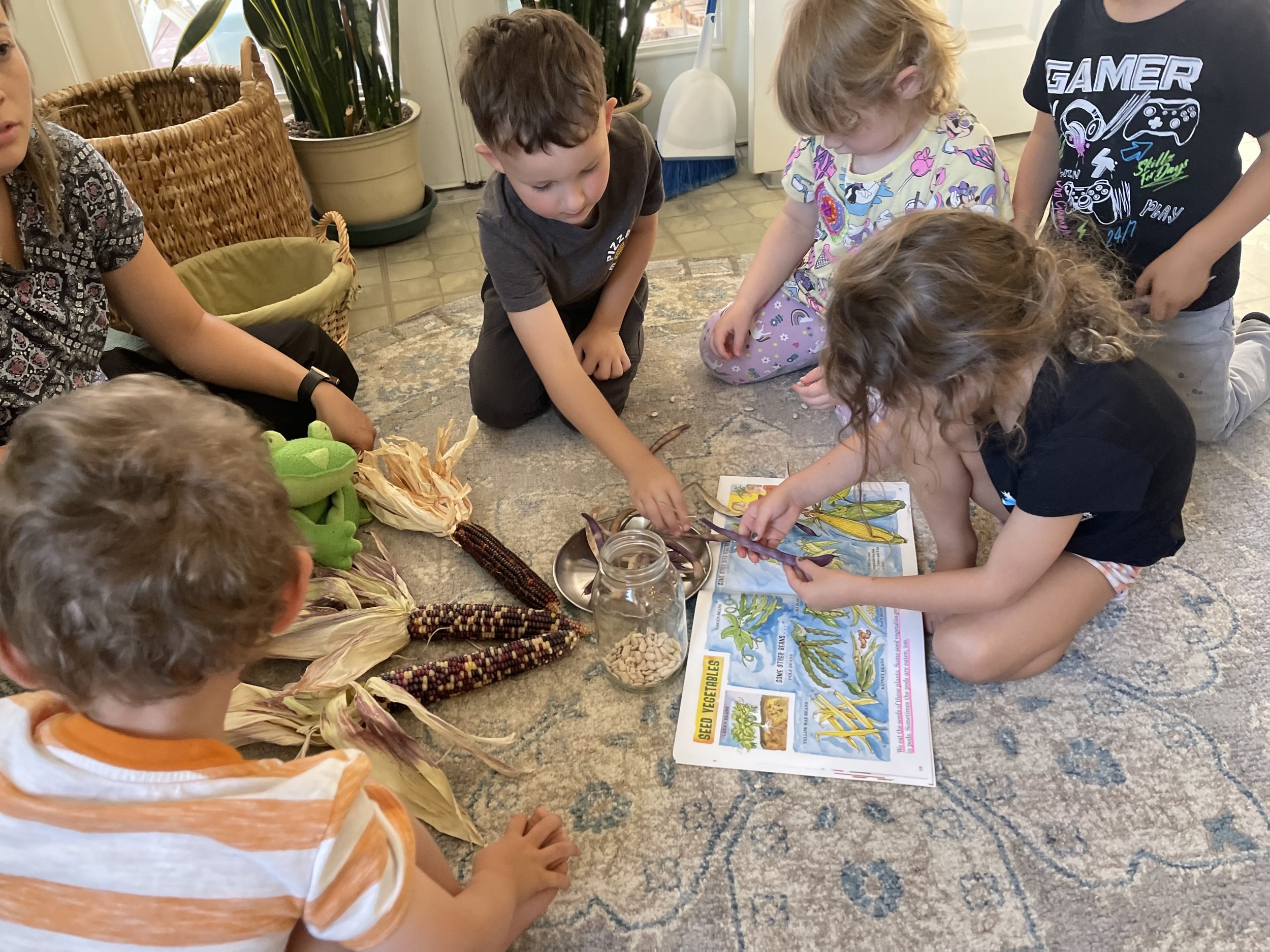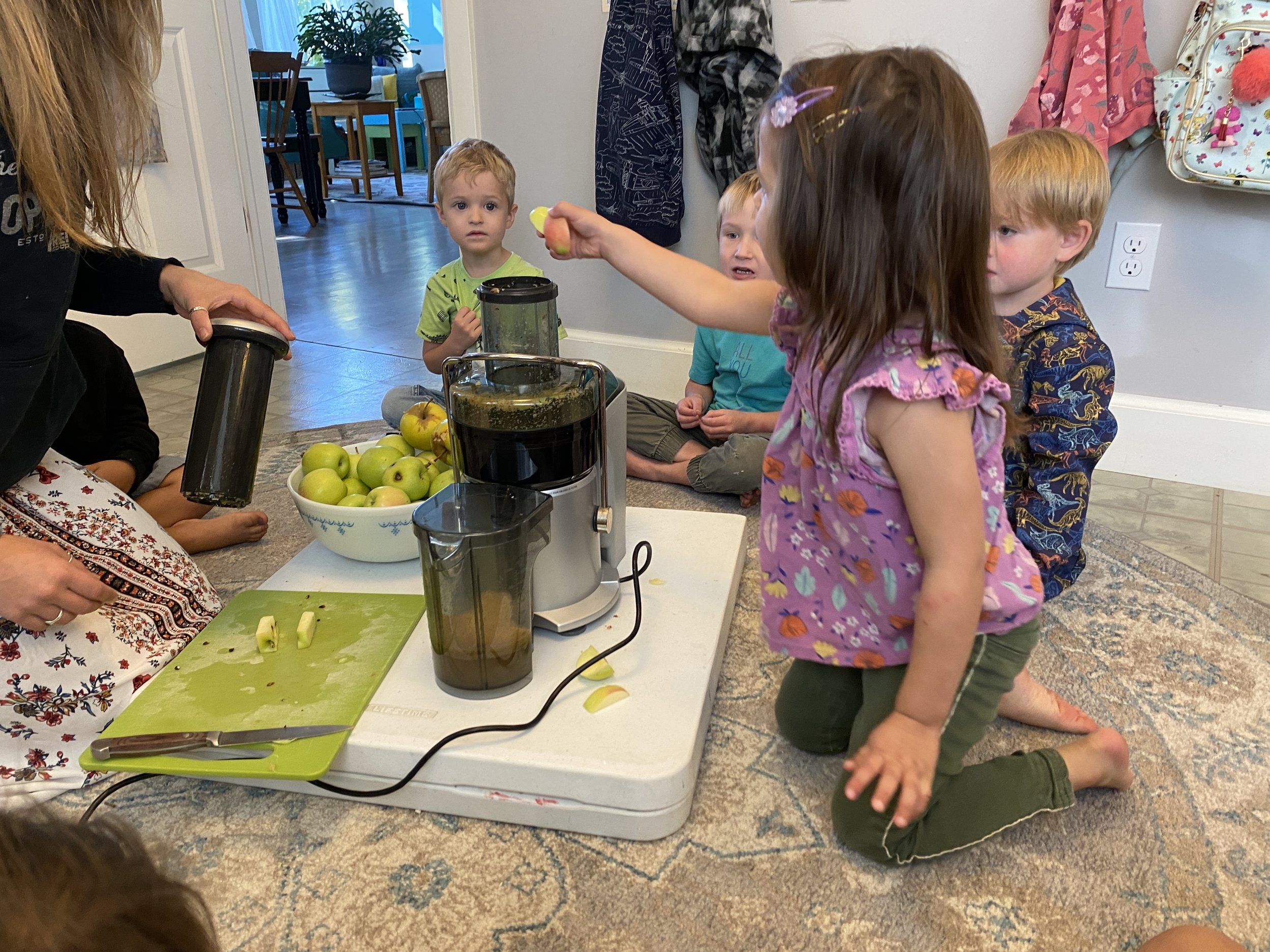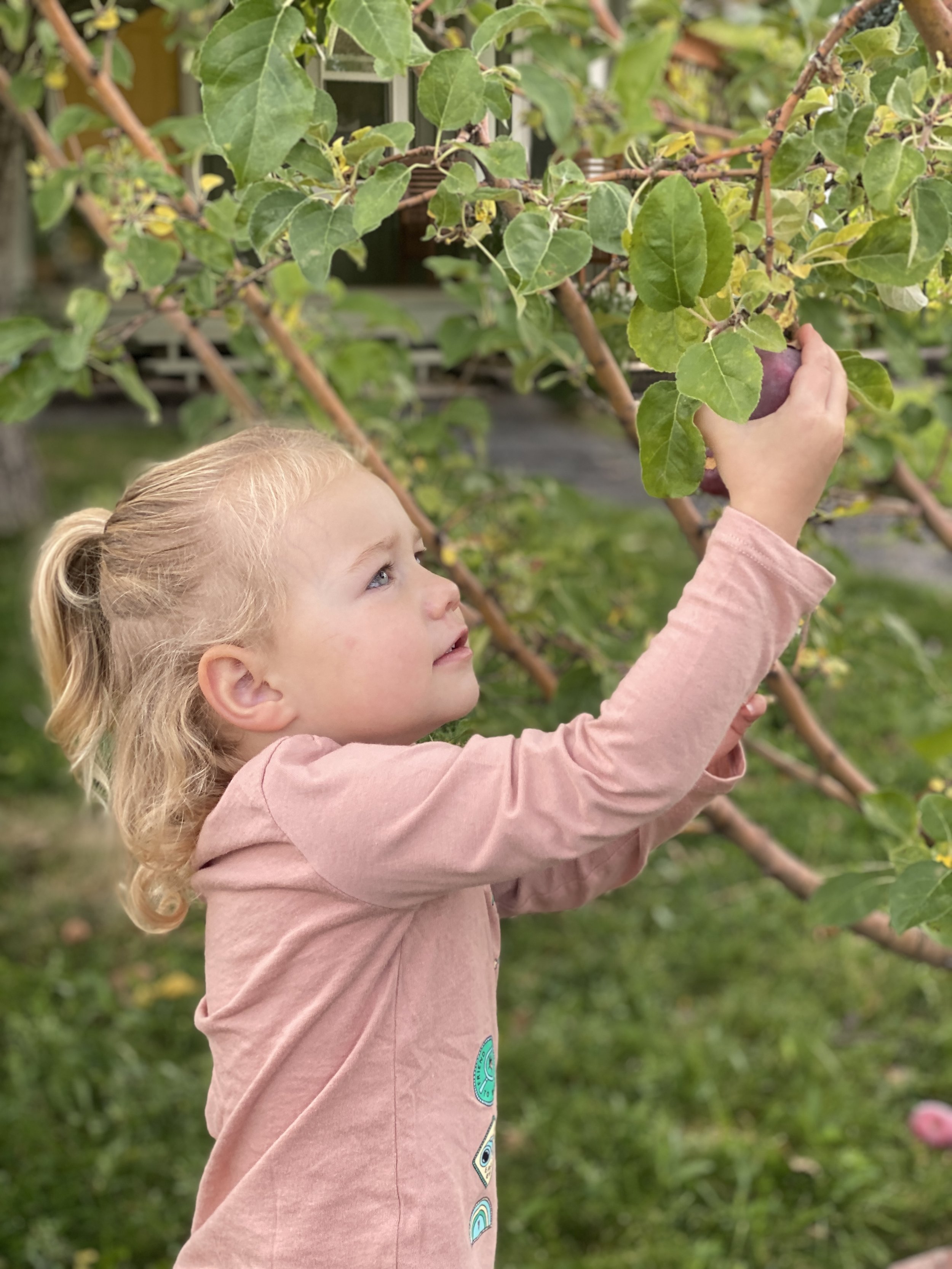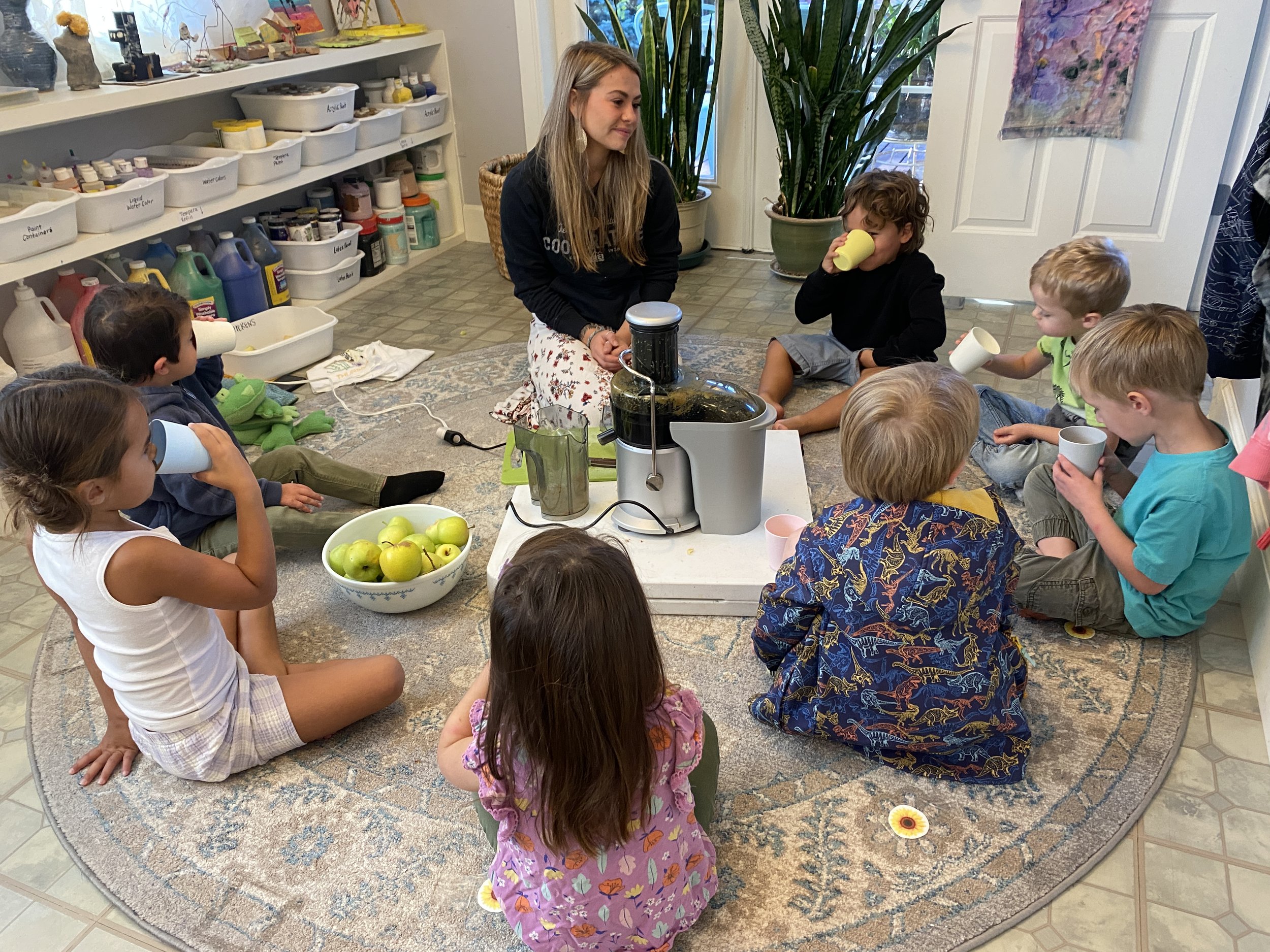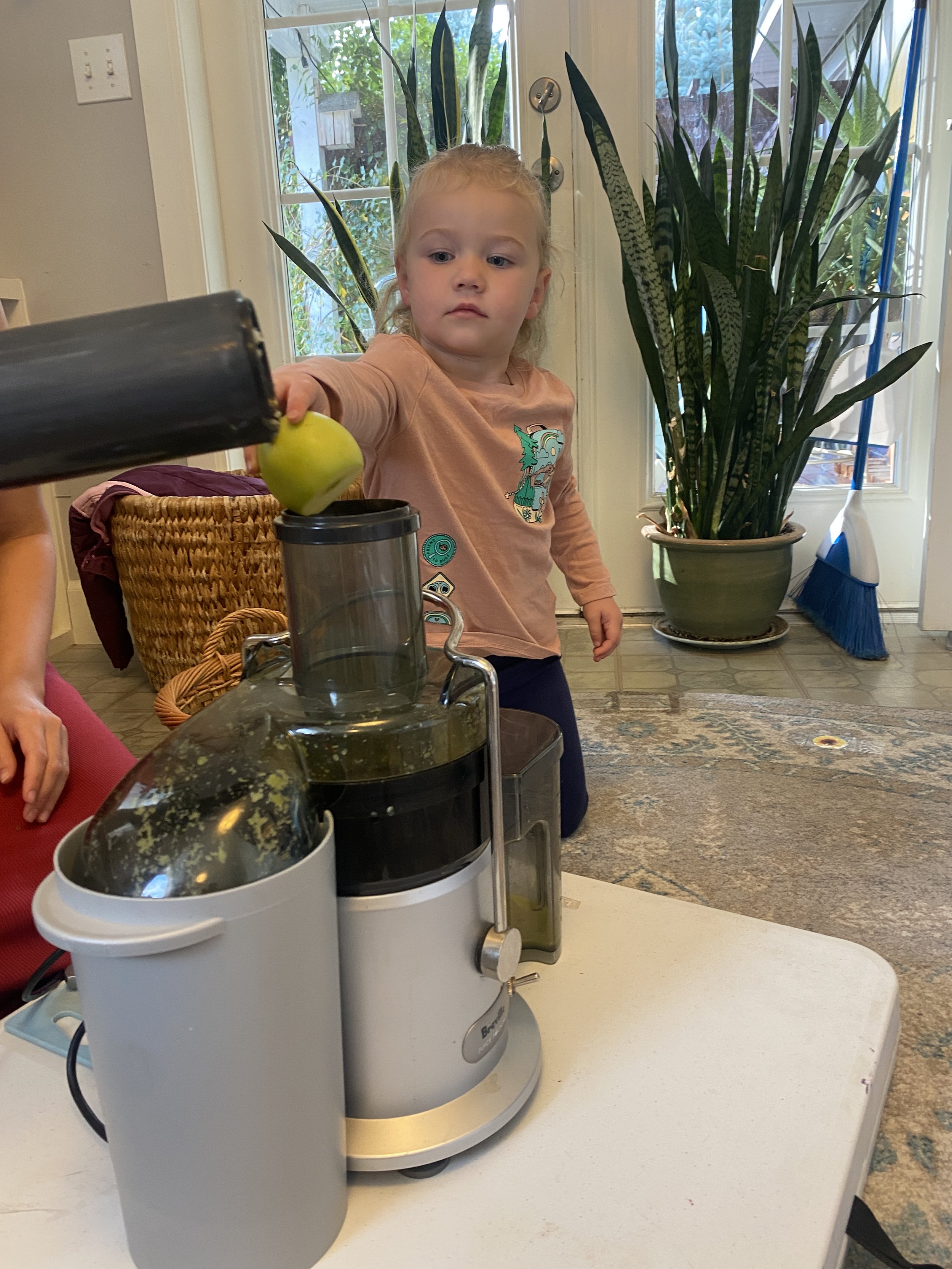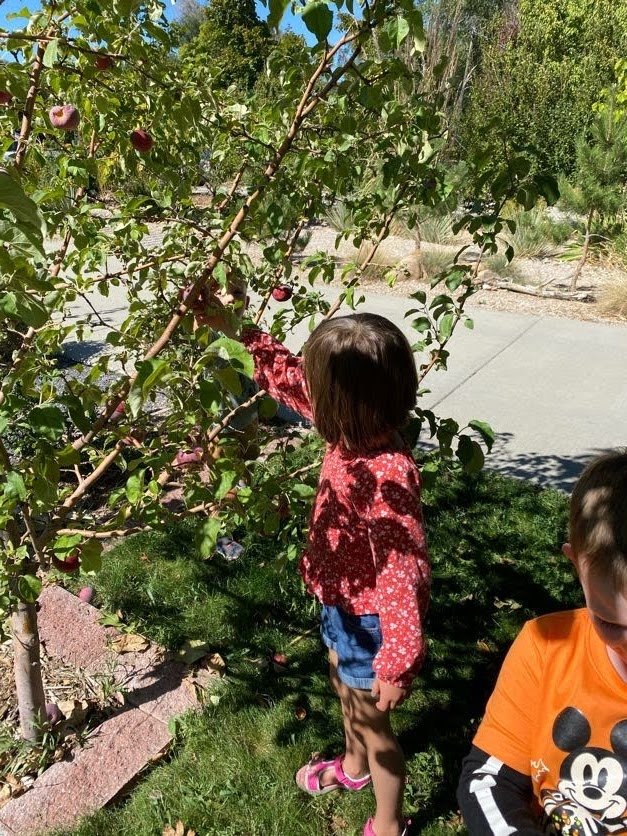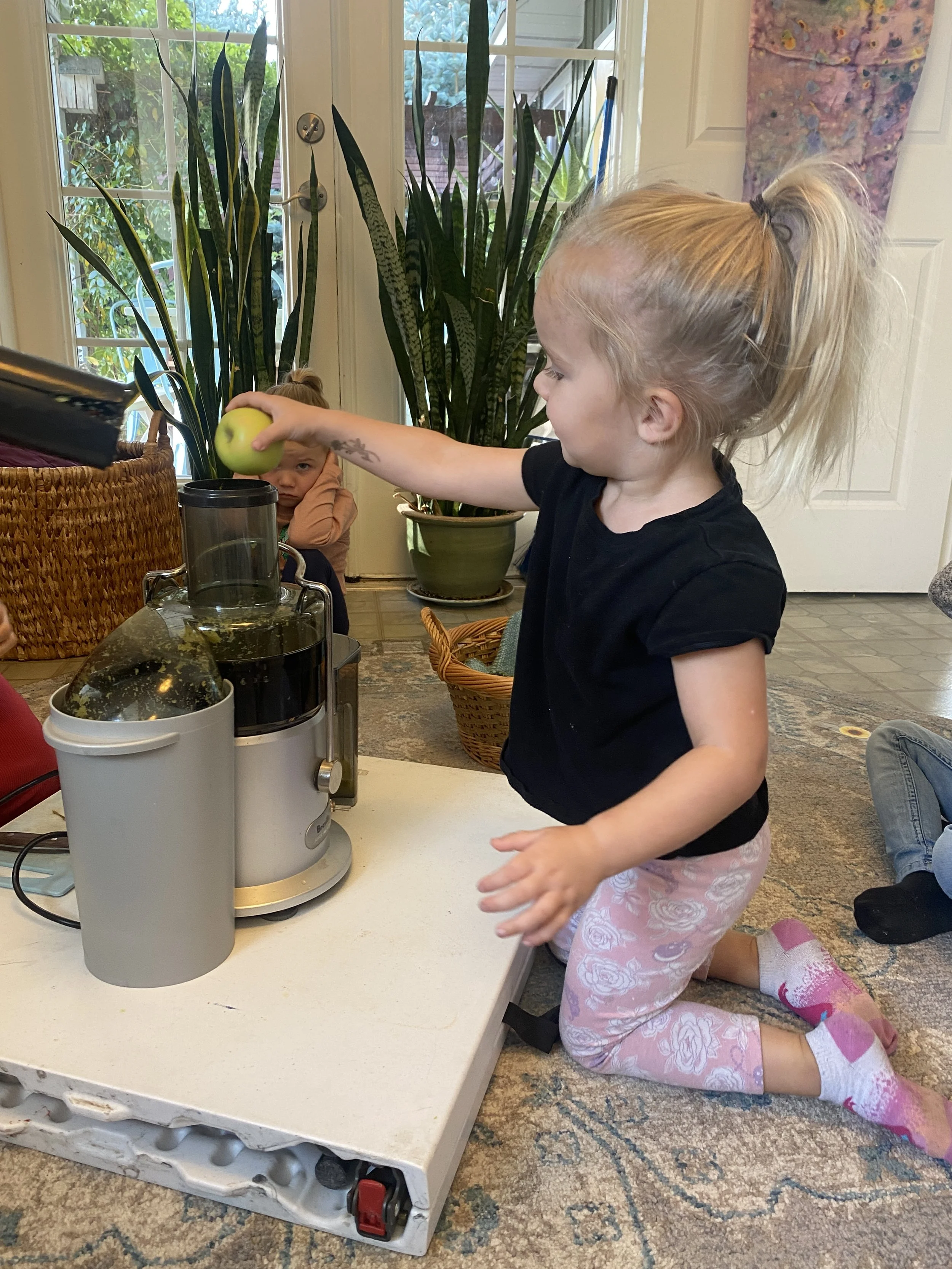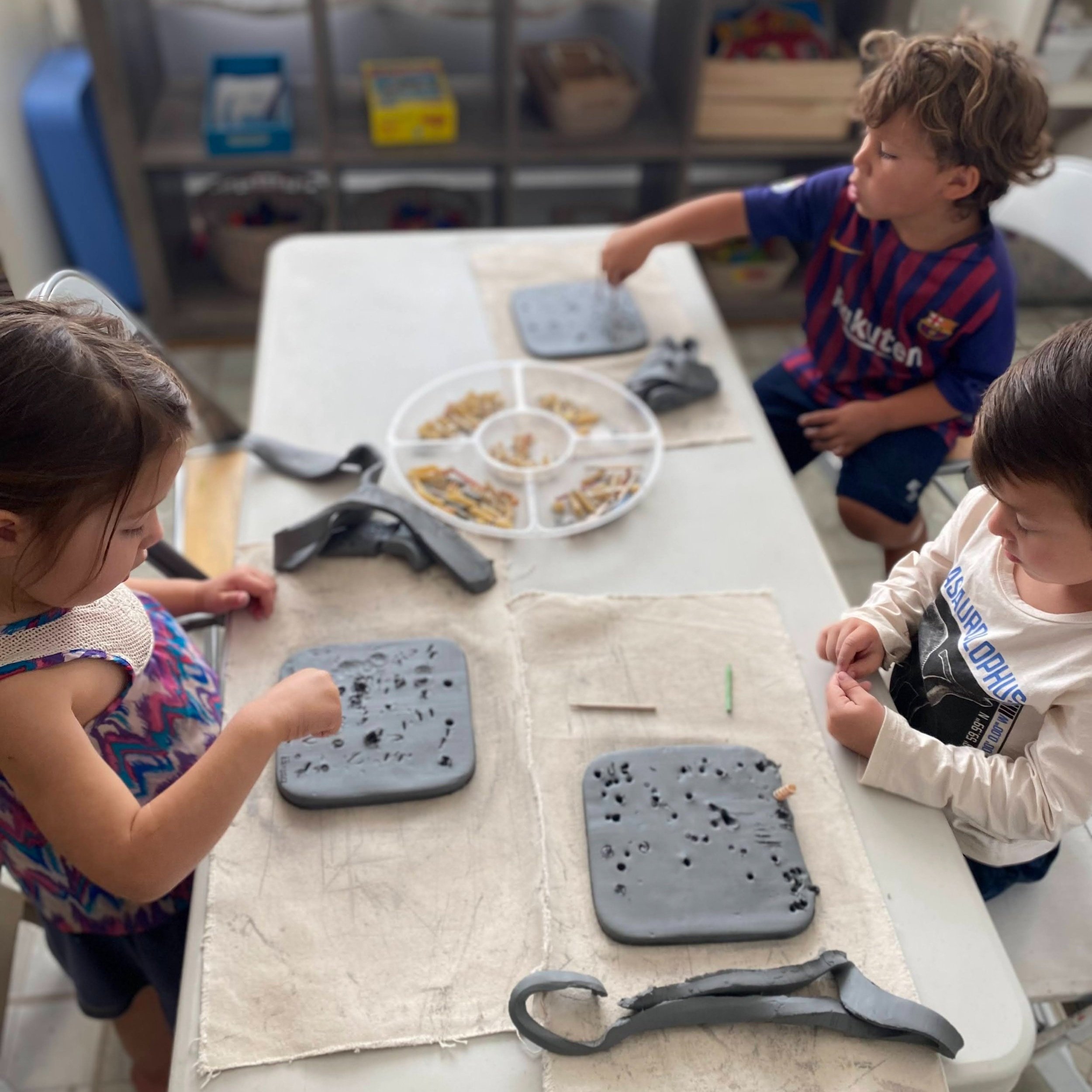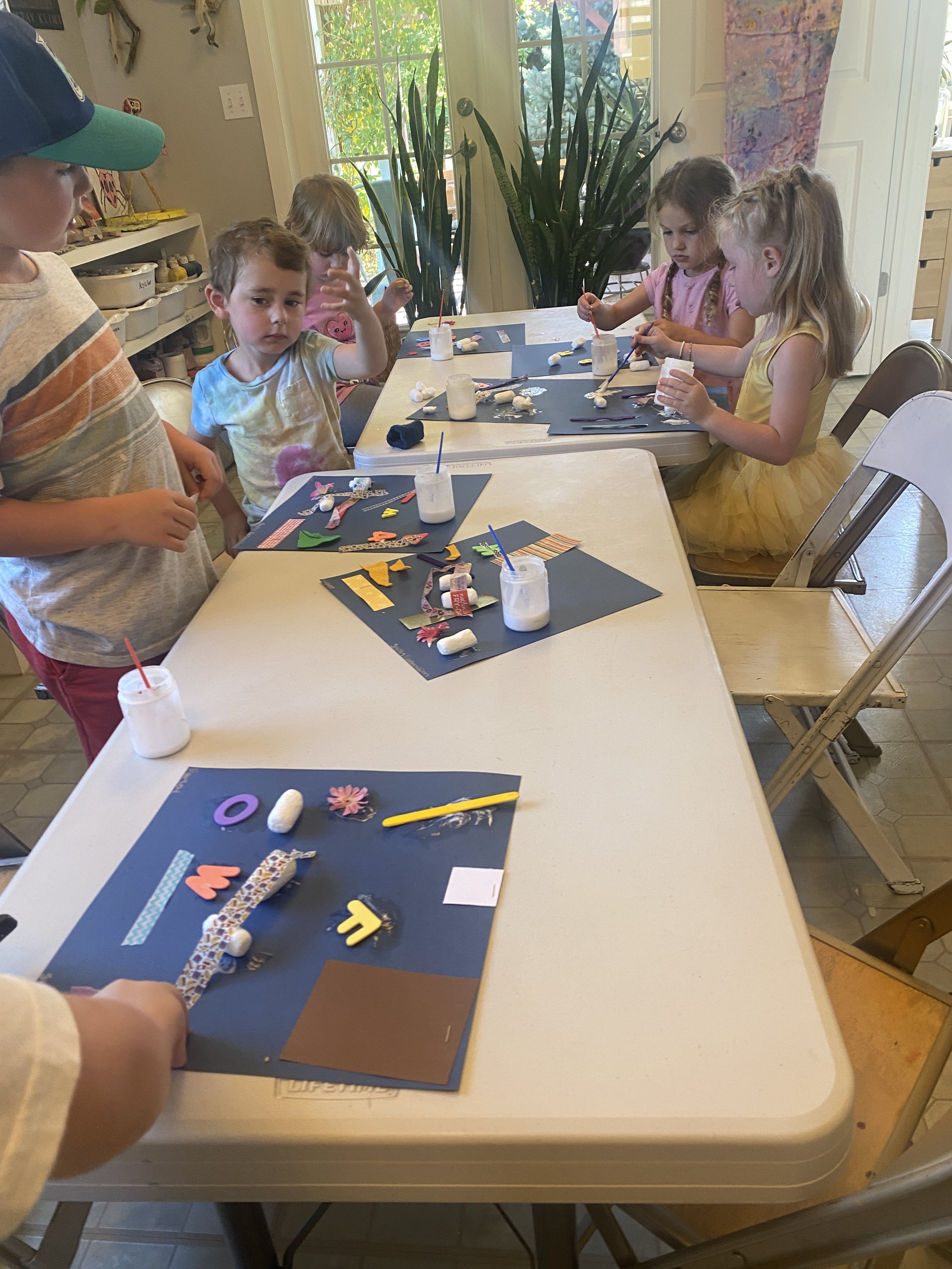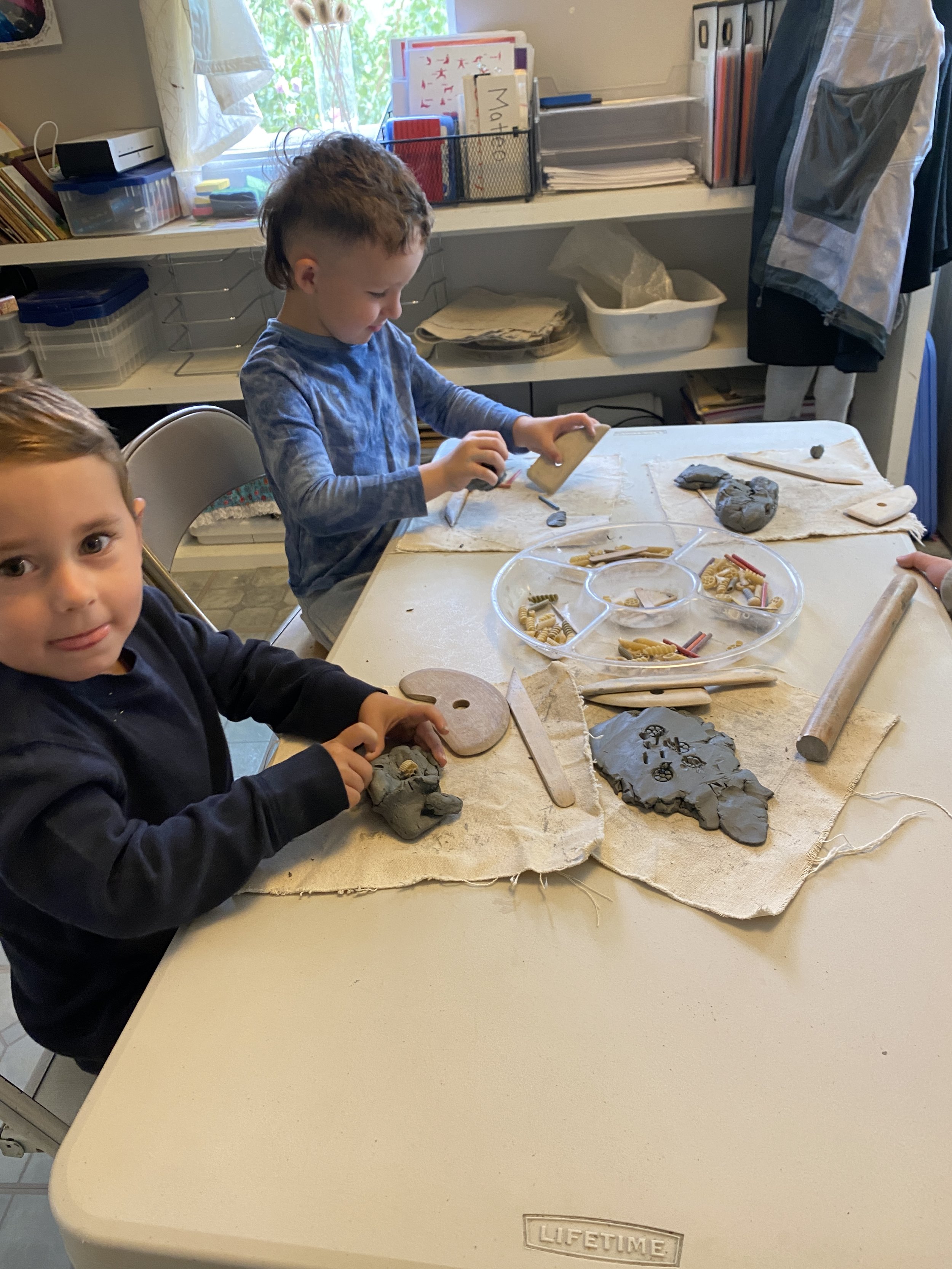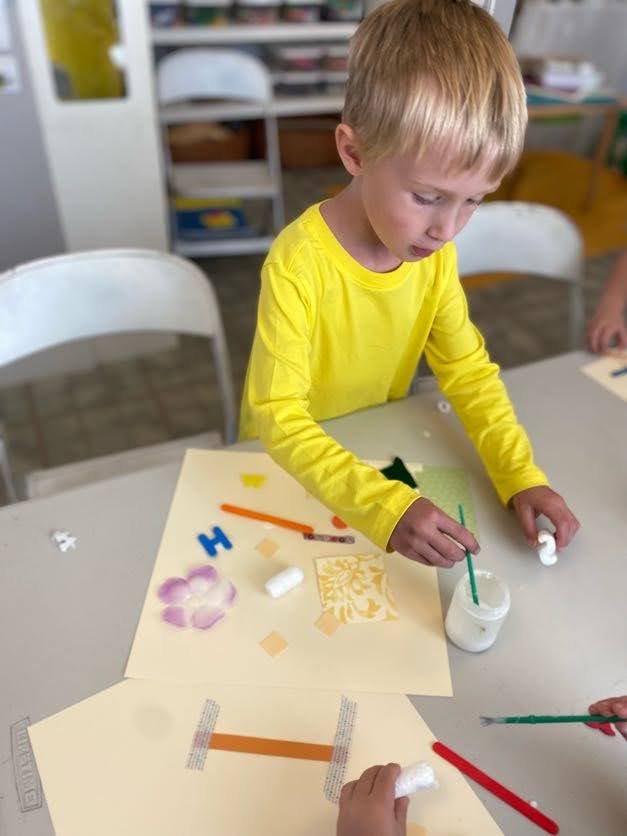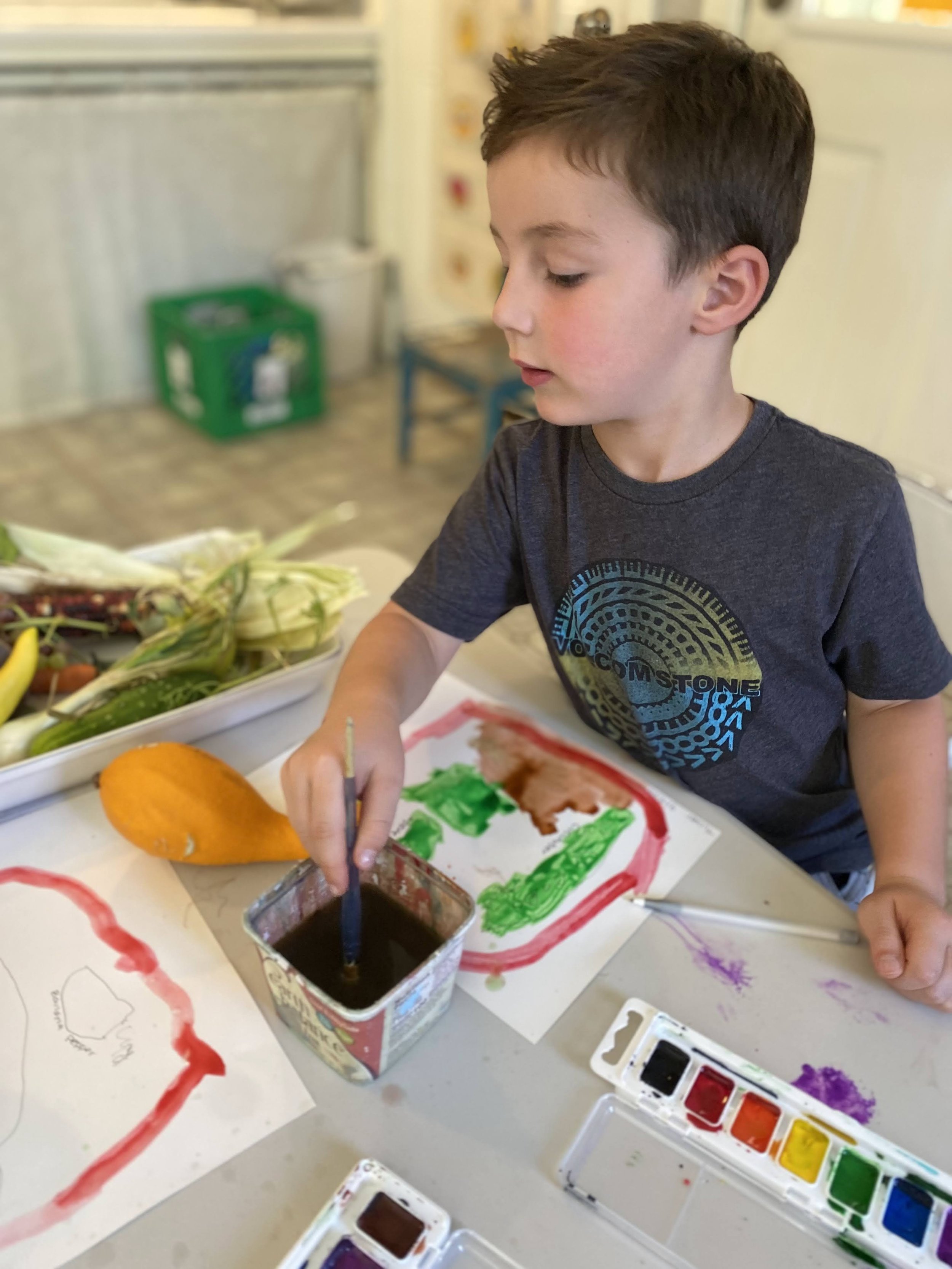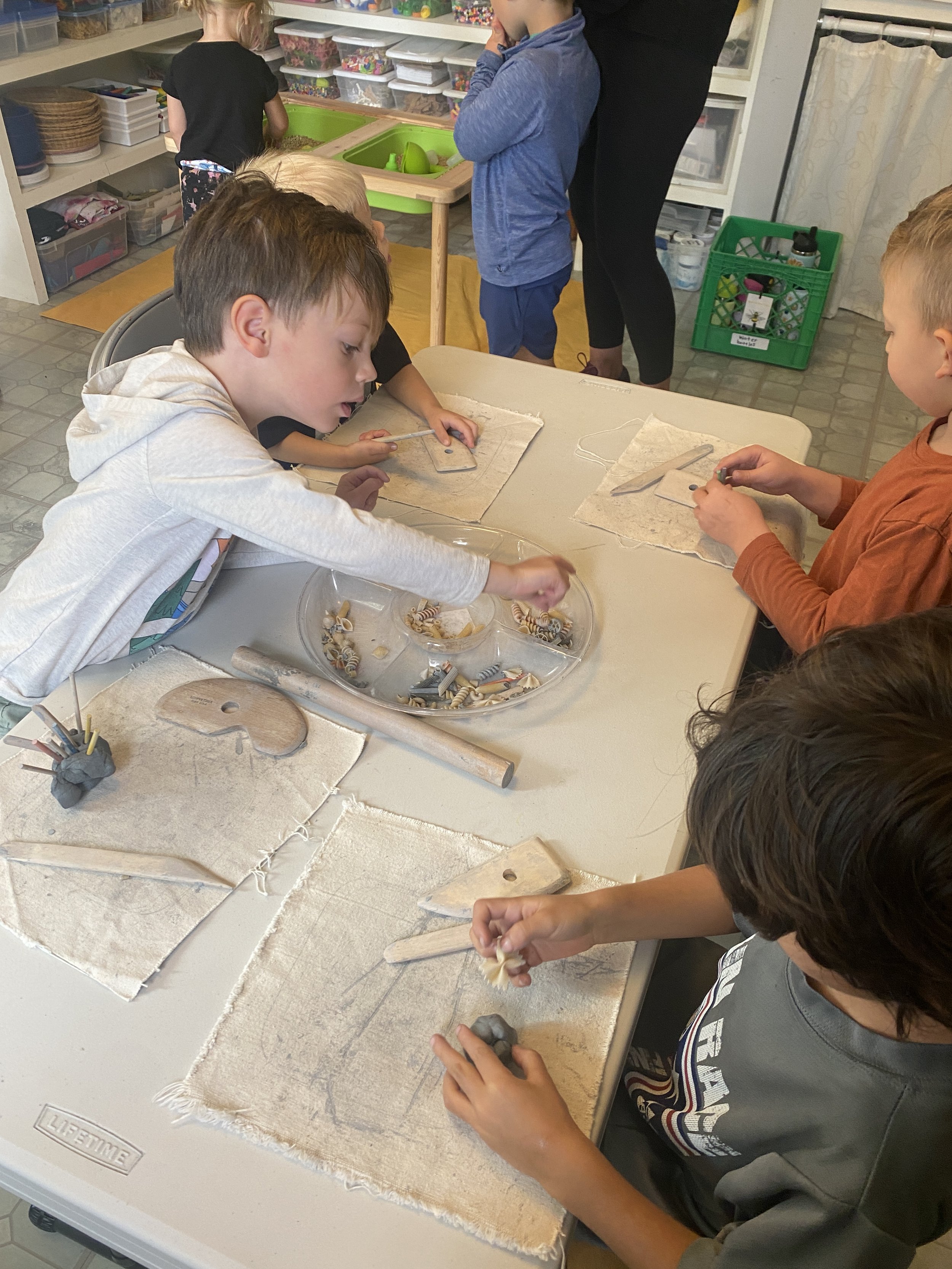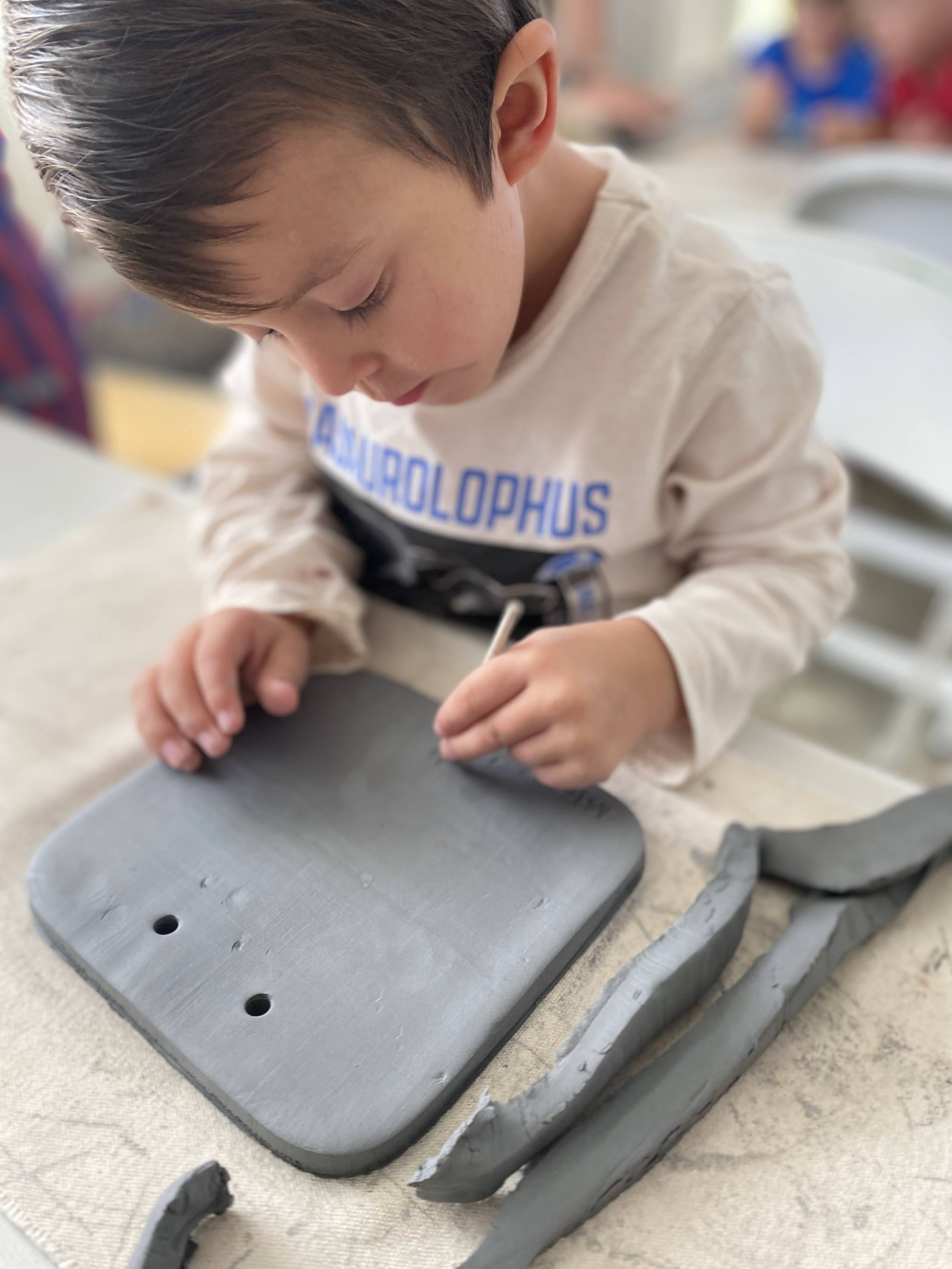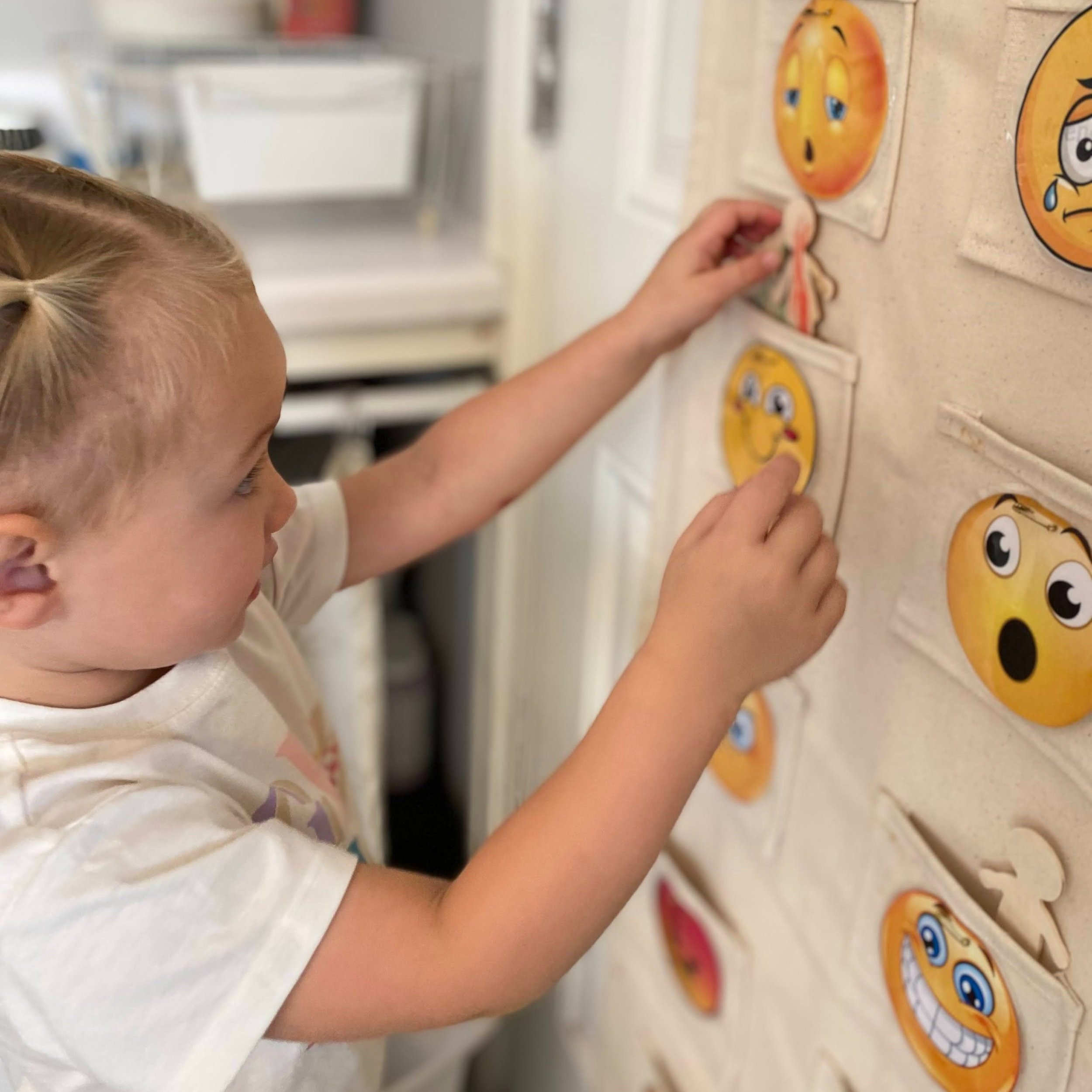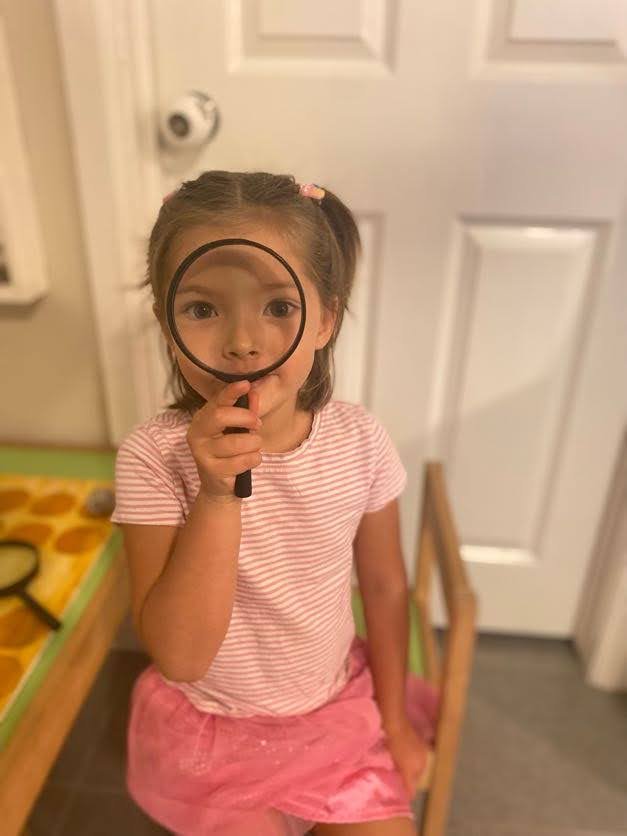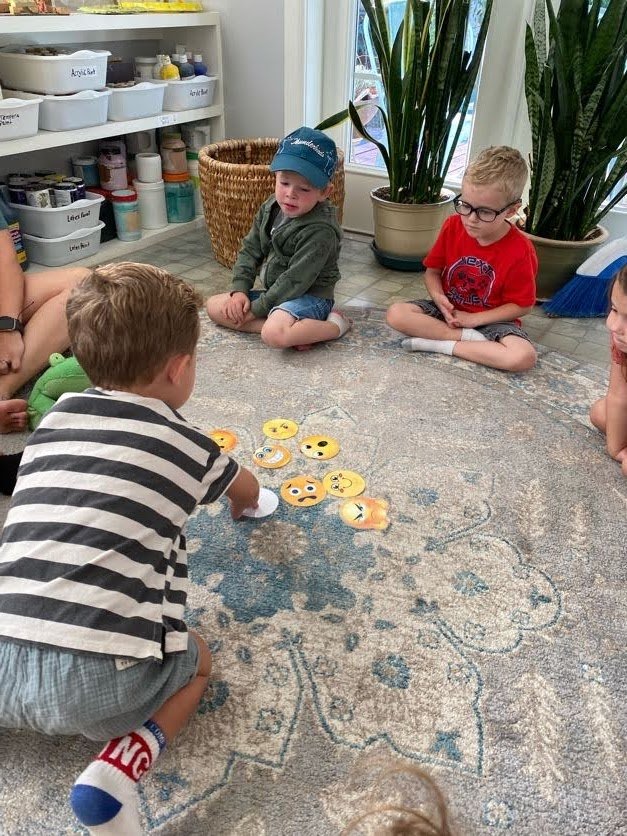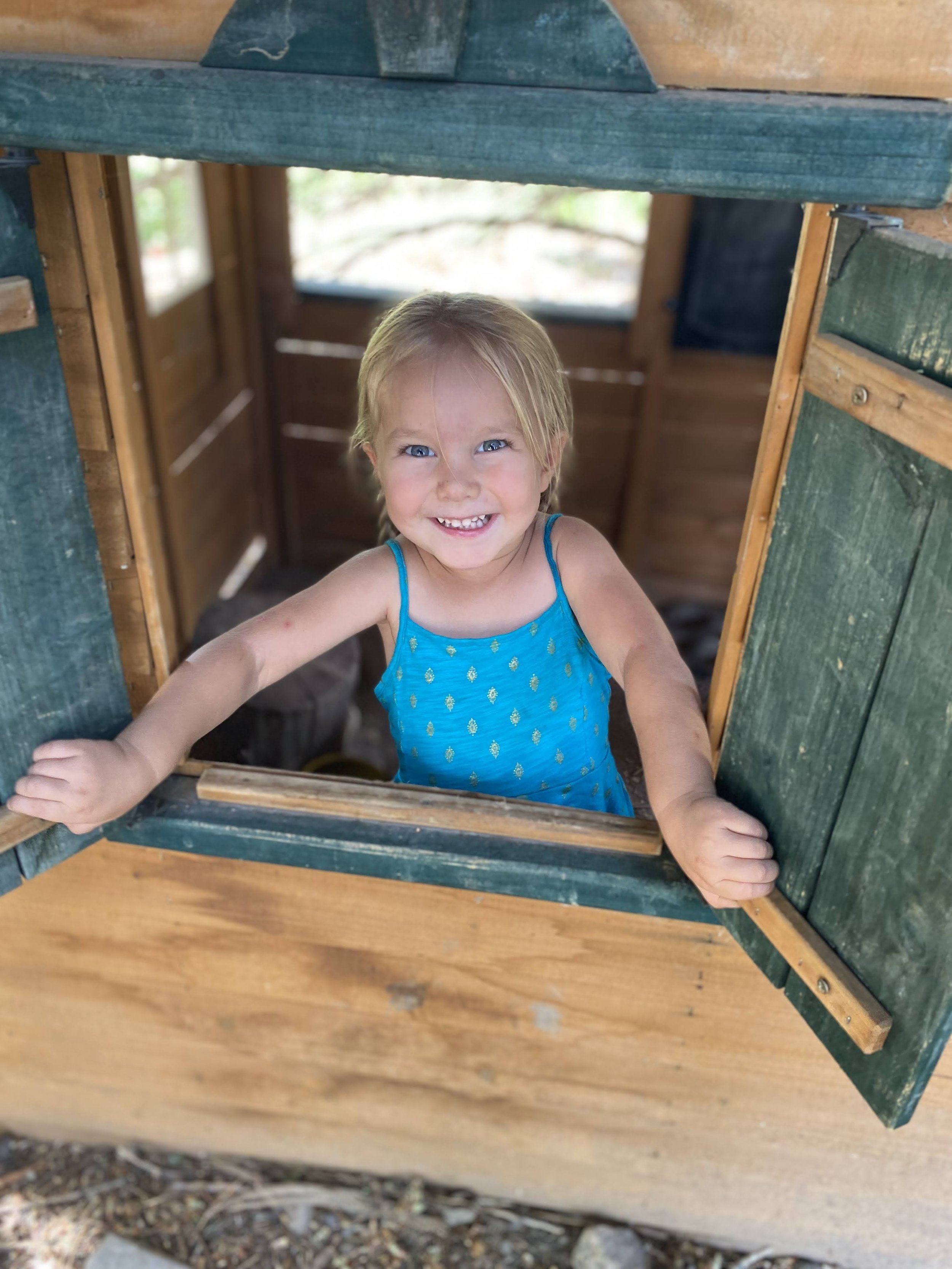September 2022: Welcome Friends!
Nurturing creativity, curiosity, and compassion
The SimpleLife Way
We have had an excellent first month of school! The children are learning so much. Preschool guides children to be able to follow procedures and actively listen to enhance their learning and development. We had the children ponder on the question “What is school?” Some of the procedures we have been teaching the children are how to make a line and follow, sit criss-cross applesauce during circle time, raise our hand when we have something to say, put on our shoes and jacket, and stay with the class and teacher at all times. These skills most importantly keep the children safe, but they also create a peaceful and productive environment to learn and play.
The children have been building meaningful relationships, participating in many activities and projects, and most importantly… PLAYING!
School sometimes is the first introduction to how to take turns and follow instructions. The children were excited to play our First Orchard board game, Duck Duck Goose, and Friendly Musical Squares. These activities teach a lot of different skills needed to grow up.
At the end of each month we will have a Cooking & Cleaning Day. This is a special, and fun, day where the children help with chores to take care of our school. We include a food exploration on this day as well. This month each class made their own batch of apple cinnamon muffins!
Songs we sang this month:
The Welcome Song
Way Up High in the Apple Tree
If You’re Happy and You Know It
I like to Eat Apples and Bananas
Books read to enhance learning experiences:
The School Book by Todd Parr
Harvest Season
When children are included in the process of gathering food they are more likely to try new fruits and vegetables!
Right when school begins the children get to experience the garden grounds at its pinnacle. This has to be one of the highlights of the school year. The children are so excited to pick the fruits and vegetables. Sometimes they get to take them home or we have them for our snack. Most of the sweet ones go right into their bellies rather than into a basket. The children learned the word harvest and about the season changing from summer to fall. The children met Farmer Bob and got to go into his personal garden to witness all the hard work he puts towards his passion.
Books read to enhance learning experiences:
Growing Vegetable Soup by Lois Ehlert
Exploring fruits, vegetables, and seeds
Color, size, smell, taste. What’s inside of them?:
We read informational text that taught us about where our fruits and vegetables come from and how they are categorized. Children’s learning was expanded by considering thought provoking questions such as: “Where is our food before it is at the grocery store?” “Where does the food grow?” “How big are the gardens?” “How are they harvested?” Our fruits and vegetables are sometimes canned, frozen, dried, or fresh!
Some grow underground, on a vine, on a stalk, on a bush, or on a tree. We played a categorizing game where each child used their deep thinking skills to decide where a fruit or vegetable grows. We were also very interested about what the inside of each food looks like. The children made predictions about color, density, juiciness, and seeds. Teachers purchased some children’s cooking knives and allowed the children to cut open the foods after being shown safety protocol. Although a little adult nerve-wracking… the children proved their skills and responsibility. There was not a single problem with the cooking knives in any of the classes.
We also included the children in harvesting seeds for the spring so we can plant all over again. We will go into greater depth about seeds in the spring, but the children were excited to crack open the bean pods, and pick off the painted mountain corn kernels.
Books read to enhance learning experiences:
The Vegetables We Eat by Gail Gibbons
The Fruit We Eat by Gail Gibbons
Apples!
All the yummy things we can make with apples:
At SimpleLife, we take pride in a relevant and child-directed curriculum. With the abundance of apples we were growing -and incorporating into the snacks, we decided to turn it into an entire exploration. The children harvested apples, made apple juice, dried apple chips, and apple cinnamon muffins. We discussed all the things we can make with apples and the differences and similarities of all the different type of apples. Is there a small gross part on your apple? Just cut it off, that apple isn’t ruined!
Art Explorations:
Clay Slabs, Watercolor Still Life, and Stickies Exploration:
Art is an option for the children everyday at school. Some art projects will be brought home and some will stay at school for their portfolio.
“Process Art is art that is child-directed, choice-driven, and celebrates the experience of discovery. In process art, the final product is always unique and the focus lies in the creation of the work, not the outcome.” - A Complete Guide To Process Art
Clay Slabs: Miss Jenny is an artist of many mediums, she incorporates this love into SimpleLife curriculum. Did you know that SimpleLife has a kiln? Yep! Ceramics will be made more than once throughout the school year. The thing with these clay projects… they take a long time! It’s an ongoing art exploration with many steps in the process. It may be awhile until the children get to take the final product home.
Watercolor Still Life: Each child first drew and then painted with watercolor a bowl of fruits and vegetables. Each child had their own method, perspective, and understanding of the art process.
Stickies Exploration: At school we will be using a variety of tools for our art explorations. Kids just love glue and tape! The children chose items to glue, tape, or staple onto a display page. It required them to think about which tool would work best with the different materials. Some experienced trial and error, challenges, and great accomplishments. Teachers encourage and validate the children by praising the process over the product. We often say things like, “You are working so hard.” “I notice you are…” and “How did you come up with this neat idea?”
Introducing Mindfulness
”I feel happy when…”
Mindfulness: a mental state achieved by focusing one's awareness on the present moment, while calmly acknowledging and accepting one's feelings, thoughts, and bodily sensations, used as a therapeutic technique.
Studies show that the benefits of mindfulness for kids may include:
Increased focus, attention, self-control, classroom participation, compassion.
Improved academic performance, ability to resolve conflict, overall well-being.
Decreased levels of stress, depression, anxiety, disruptive behavior.
SimpleLife School believes that building social and emotional skills is what creates the foundation to confident, intelligent, loving, happy children. Positively guiding children through emotions and taking time to acknowledge our emotions and express them in an appropriate way is crucial for our well-being.
Each day when the children enter the school they visit the Feelings Chart. They put their little stick person into a facial expression matching how they feel. It is okay to feel any type of way. We also introduced mindfulness to the children with Mindful Moments. Waterfall breath and body scanning was practiced during the month of September and moving forward. We often ask the children how they feel to help them process their emotions. This month we focused on things that make us happy and things that make us sad. Children know exactly what these words mean and feel like, but it is thought provoking for them to associate them with a real life experience.
Books read to enhance learning experiences:
Quick As a Cricket by Audrey Wood
In My Heart by Jo Witek


